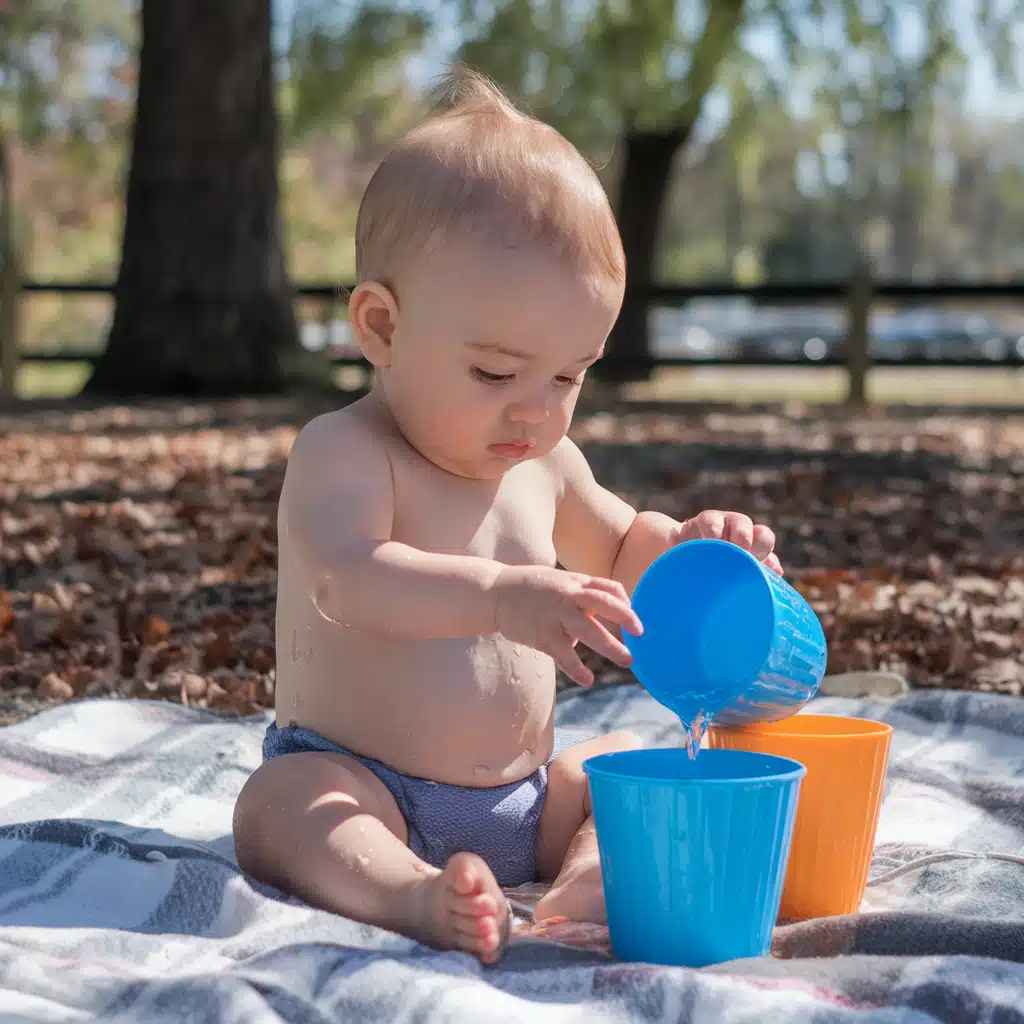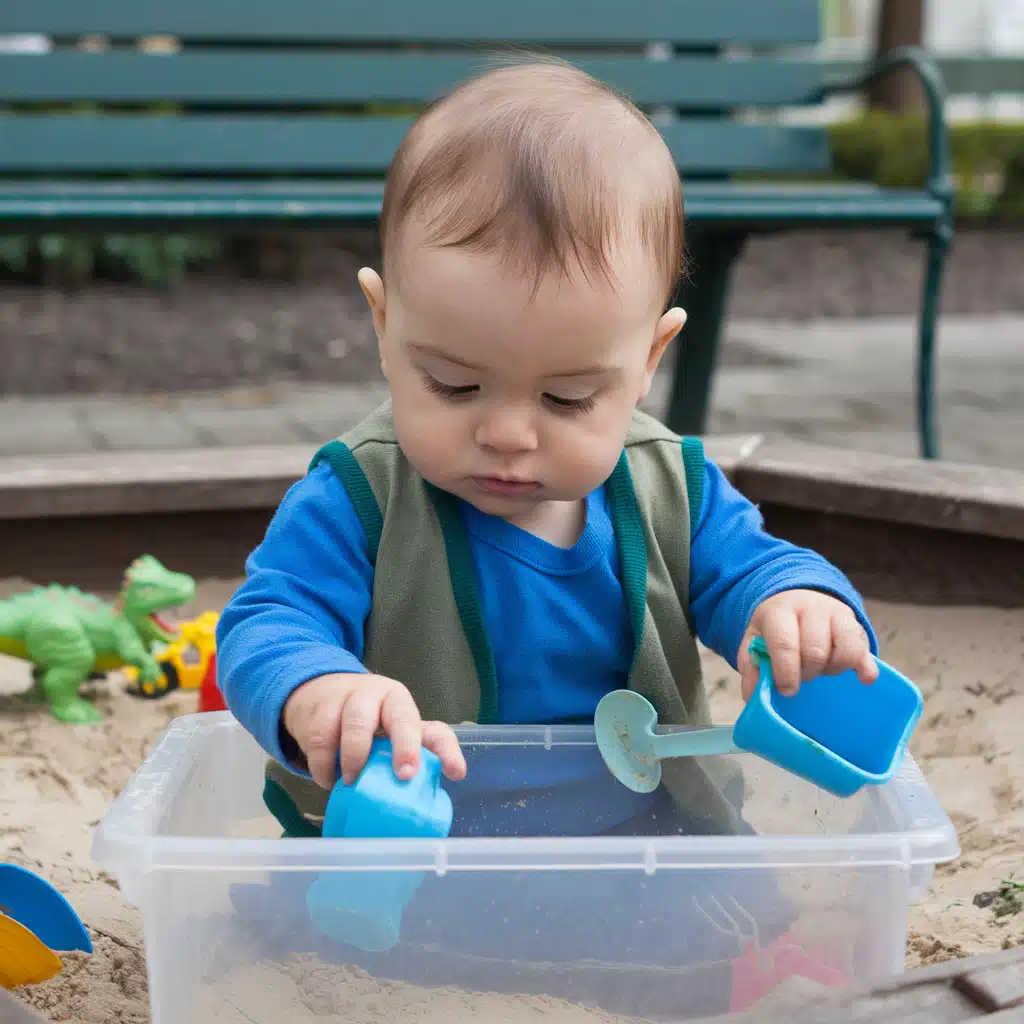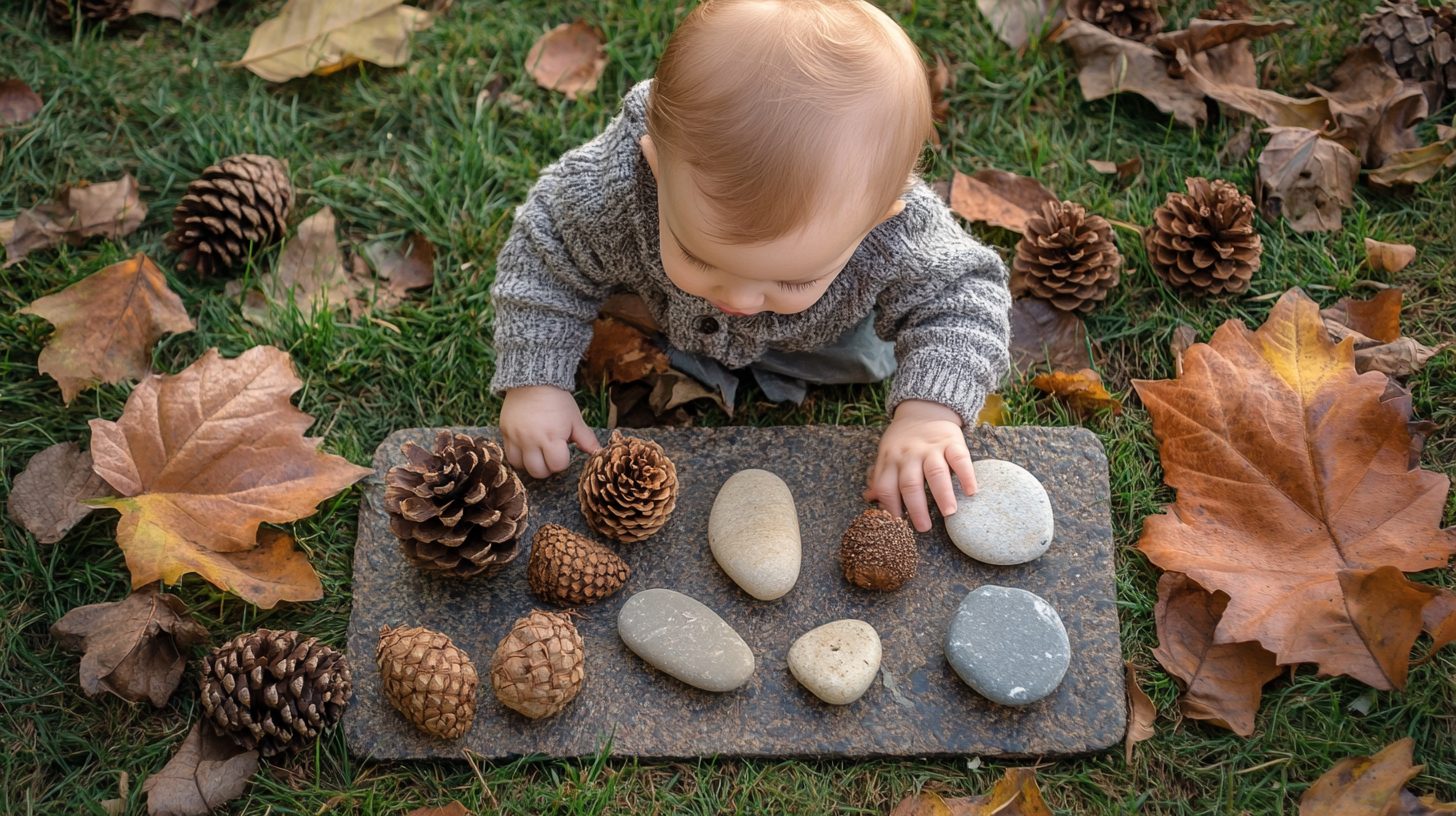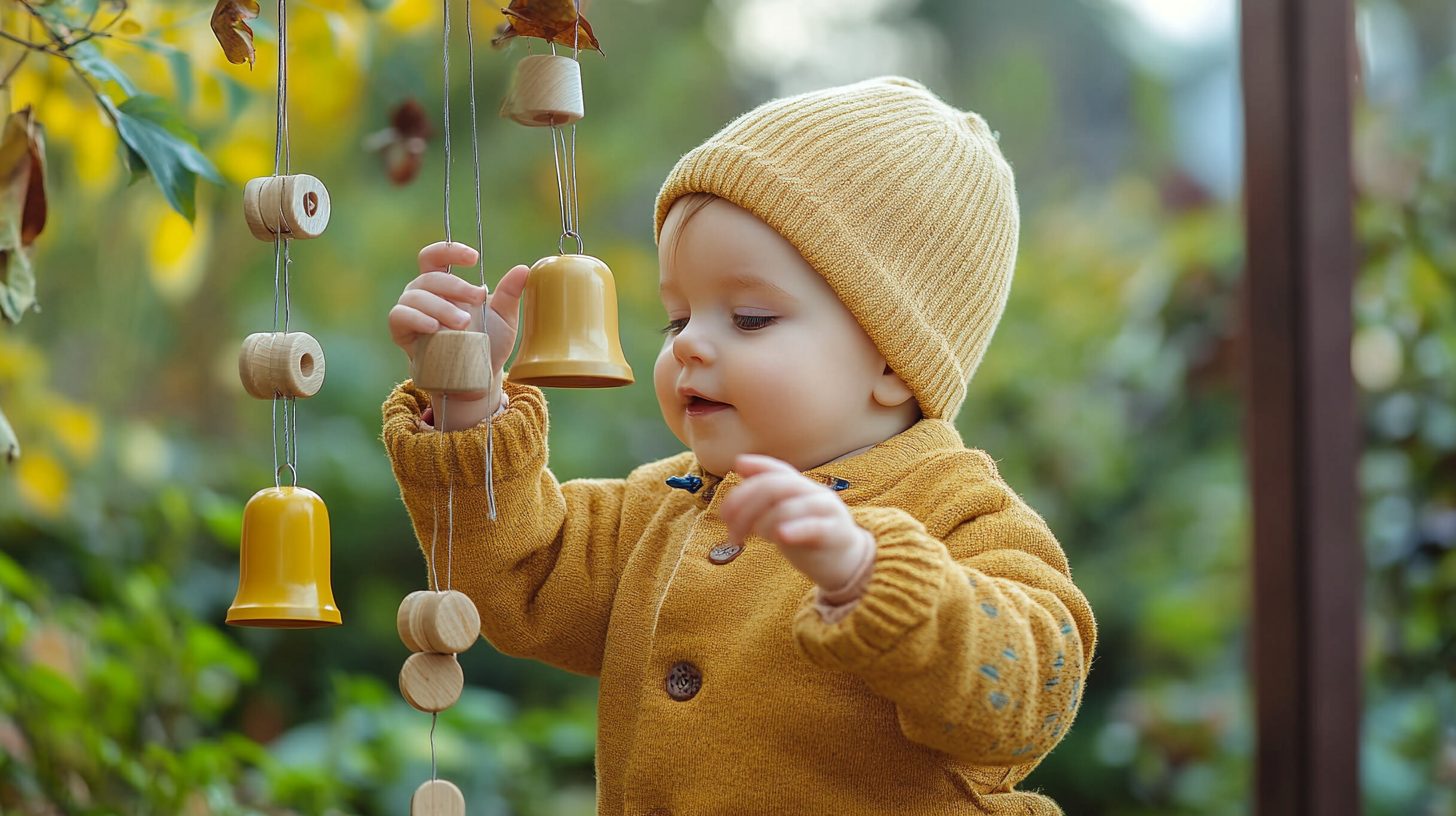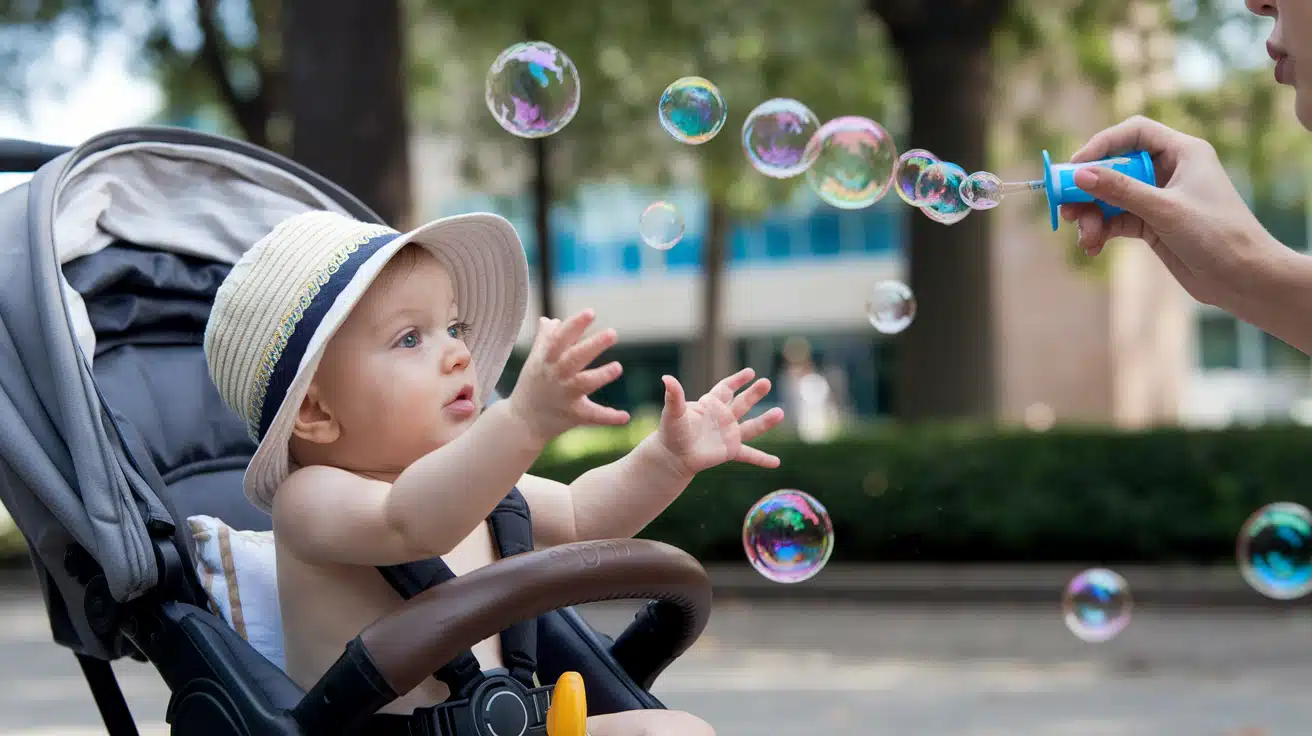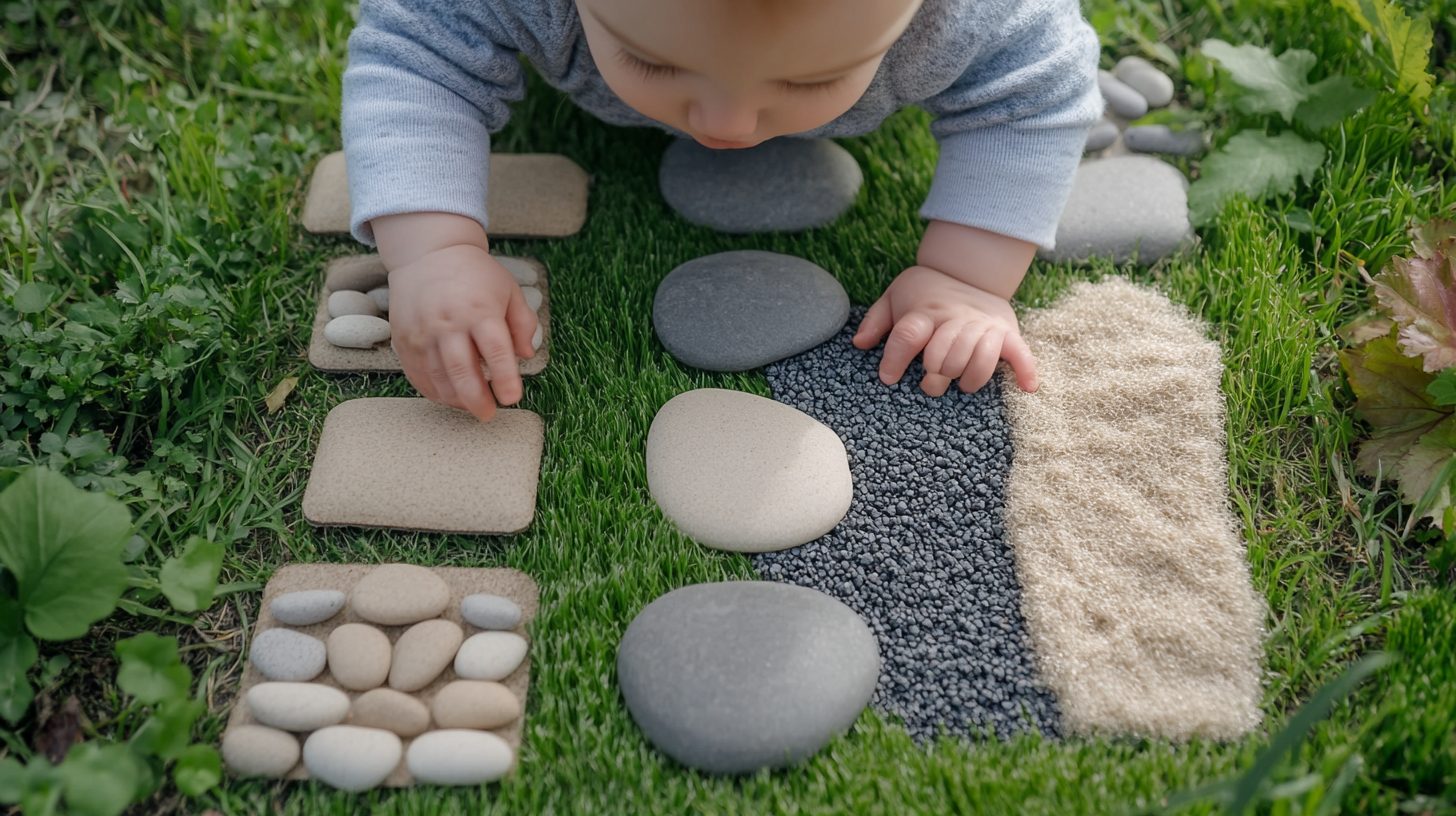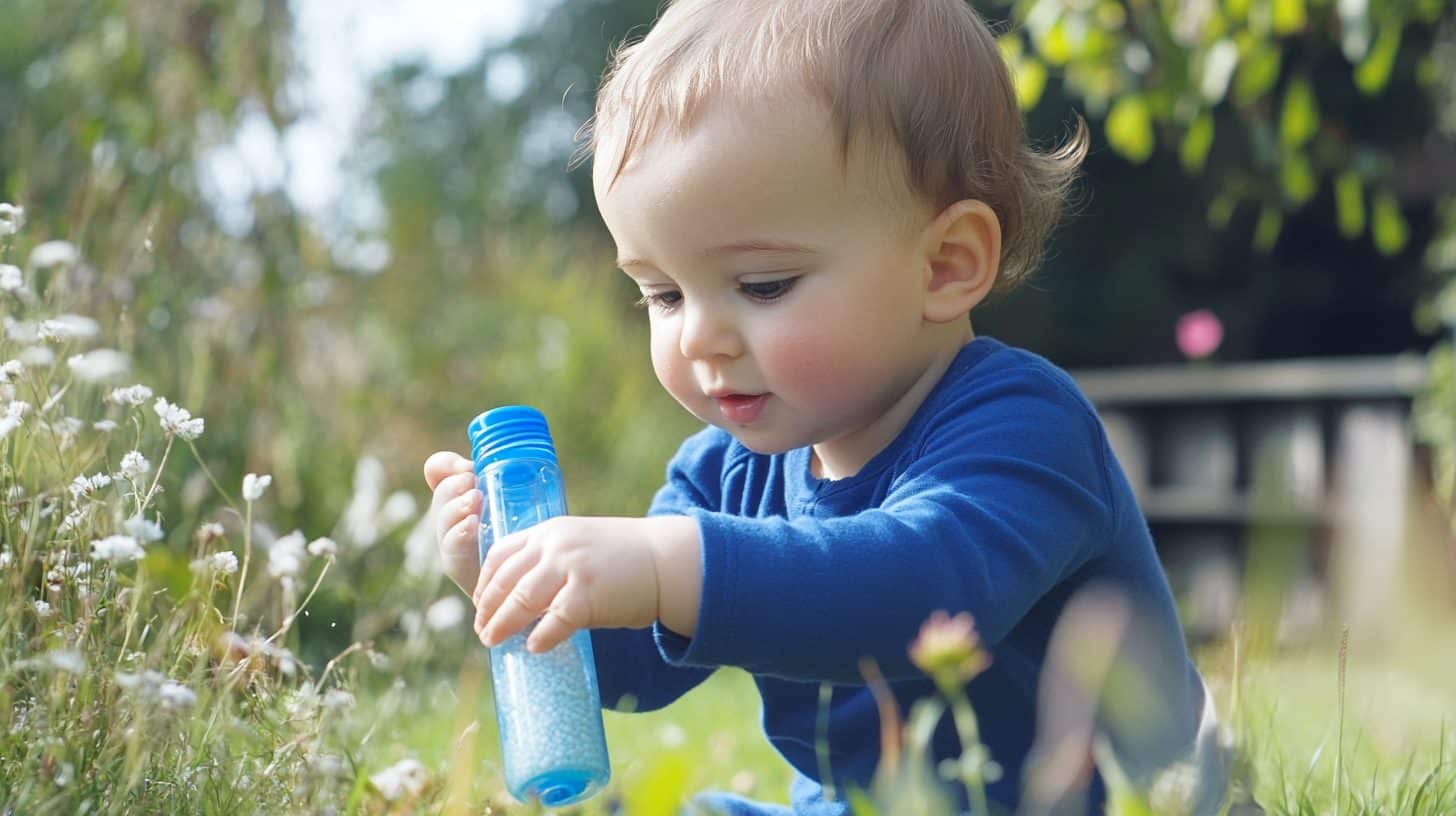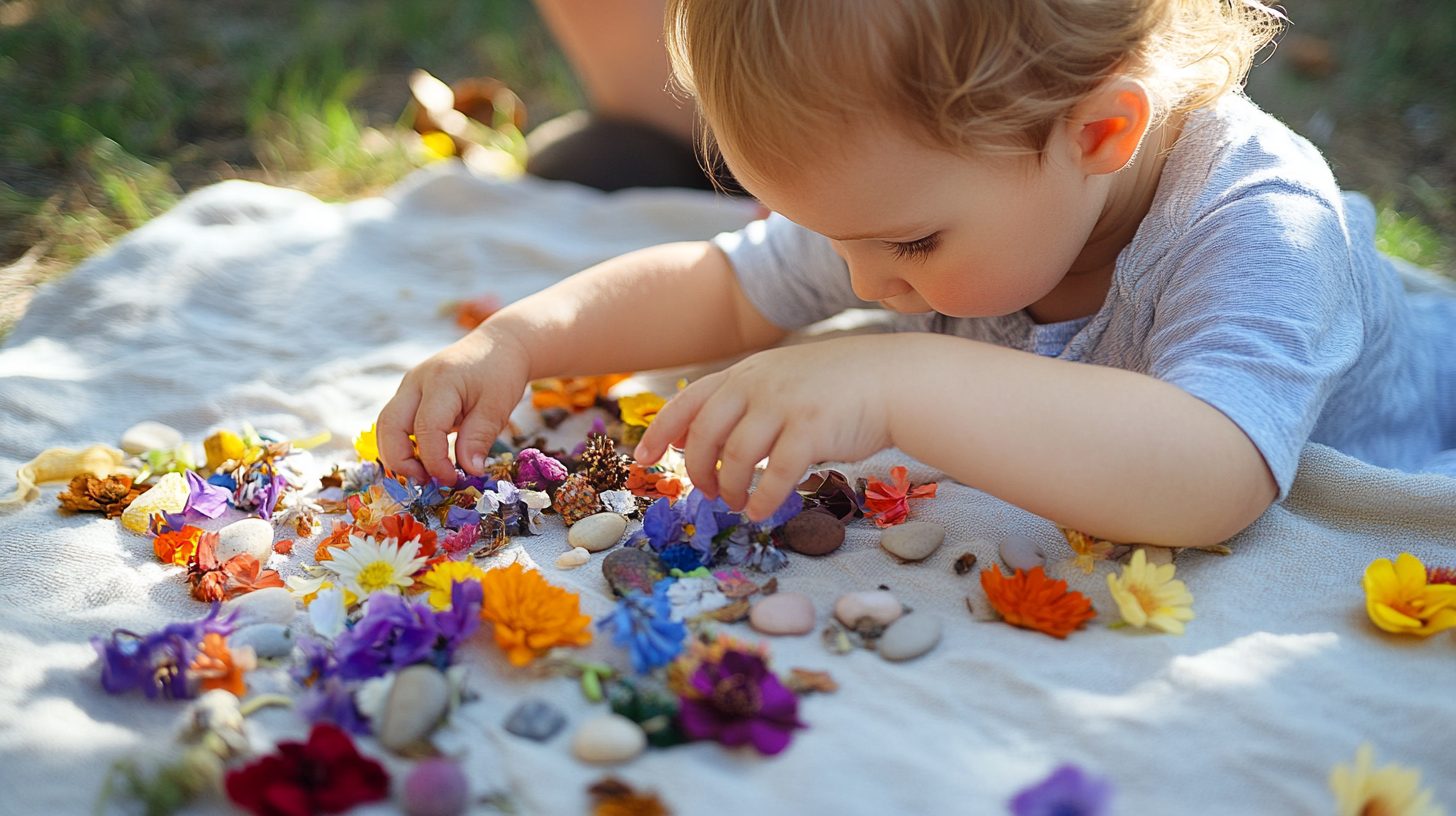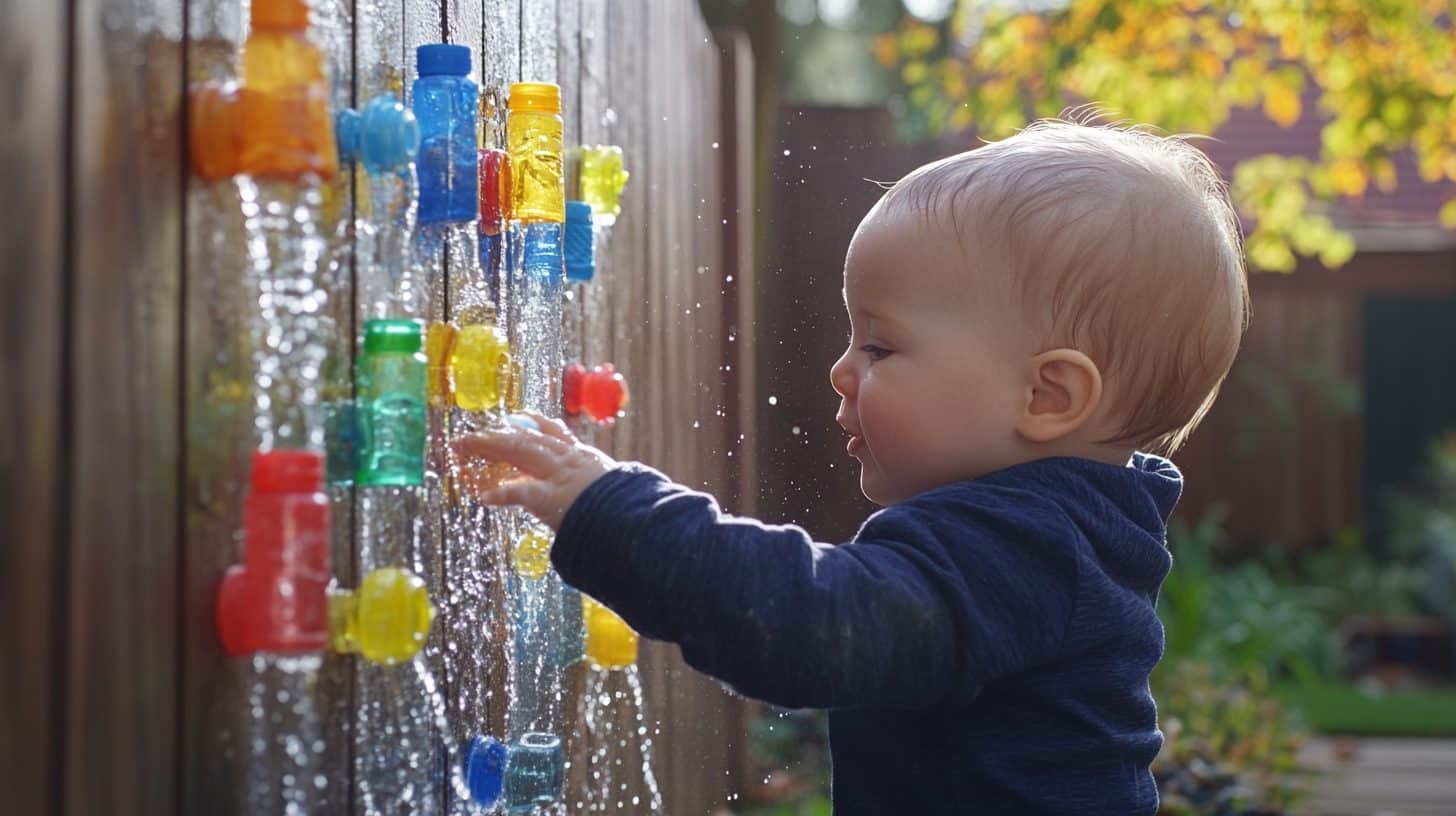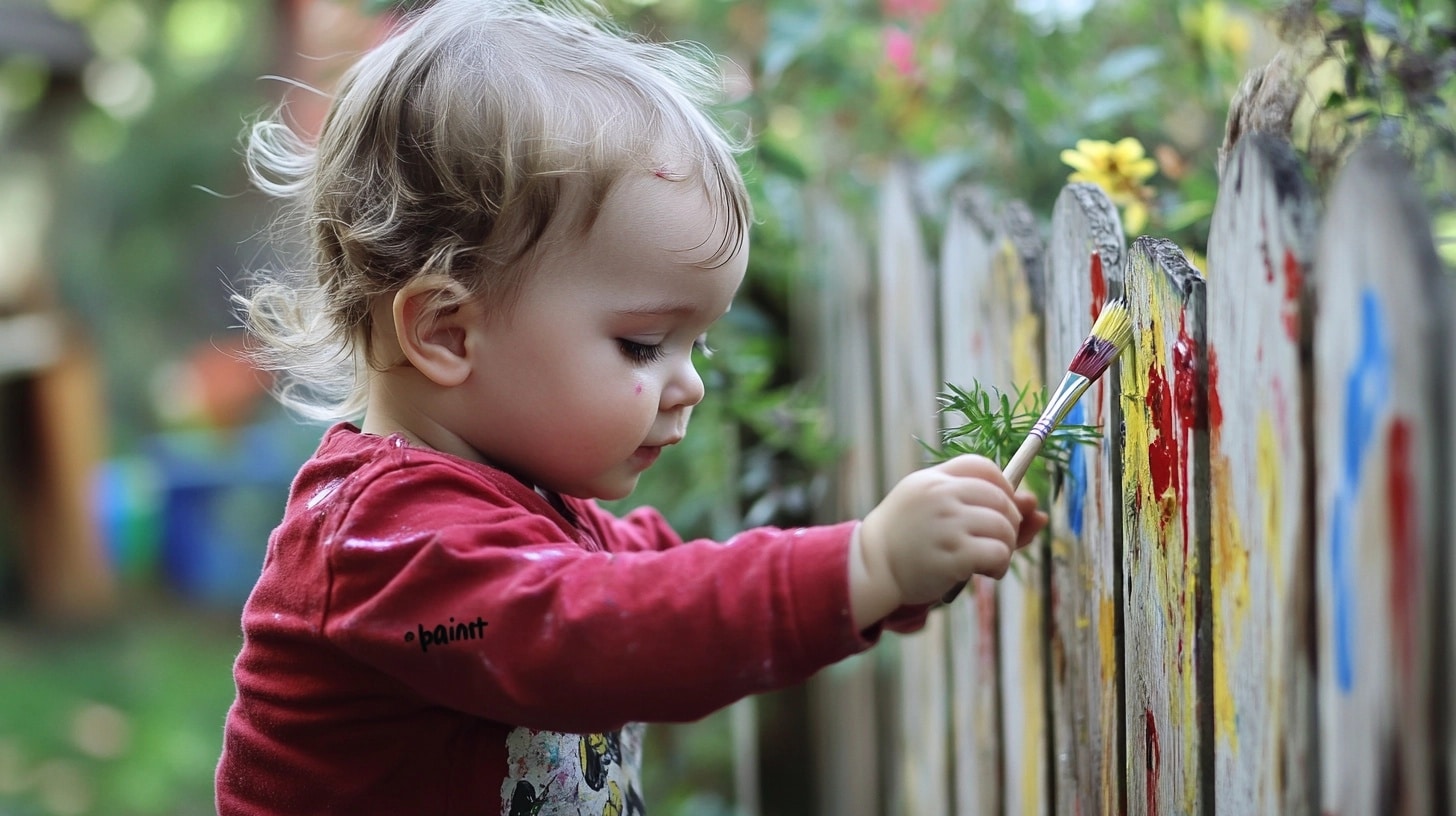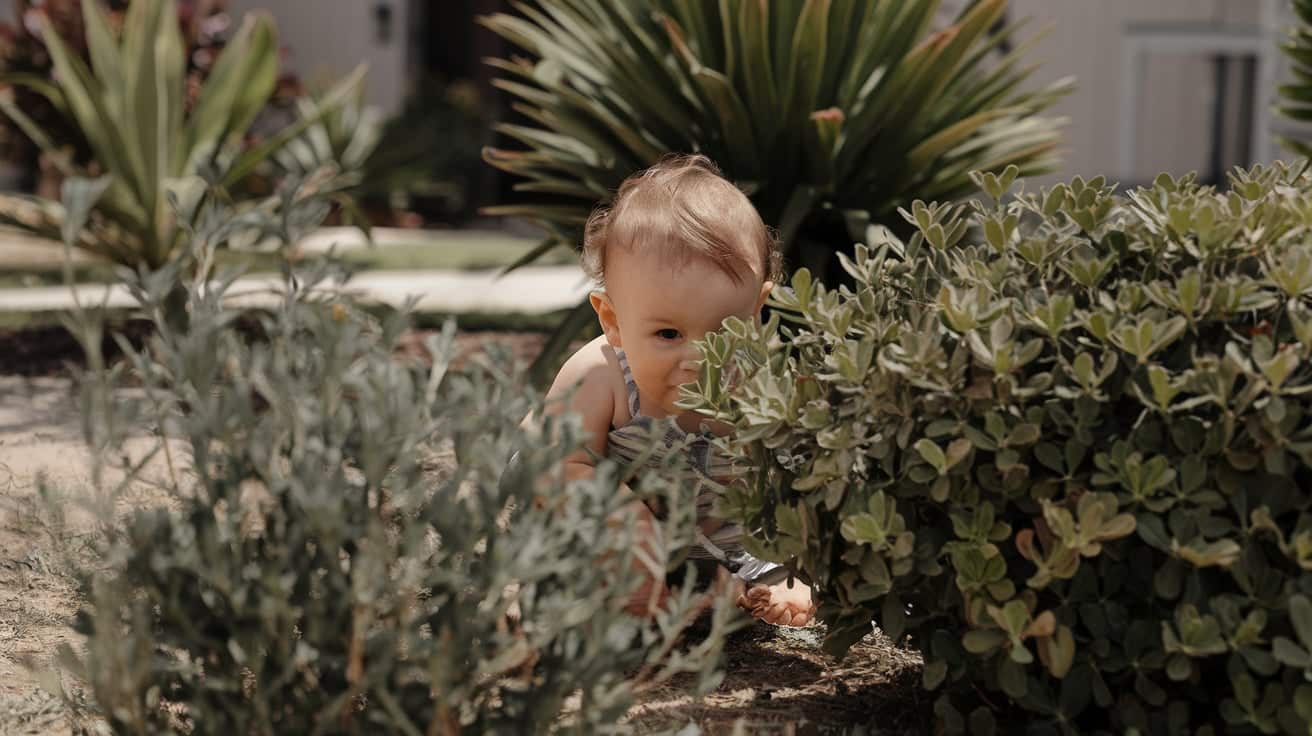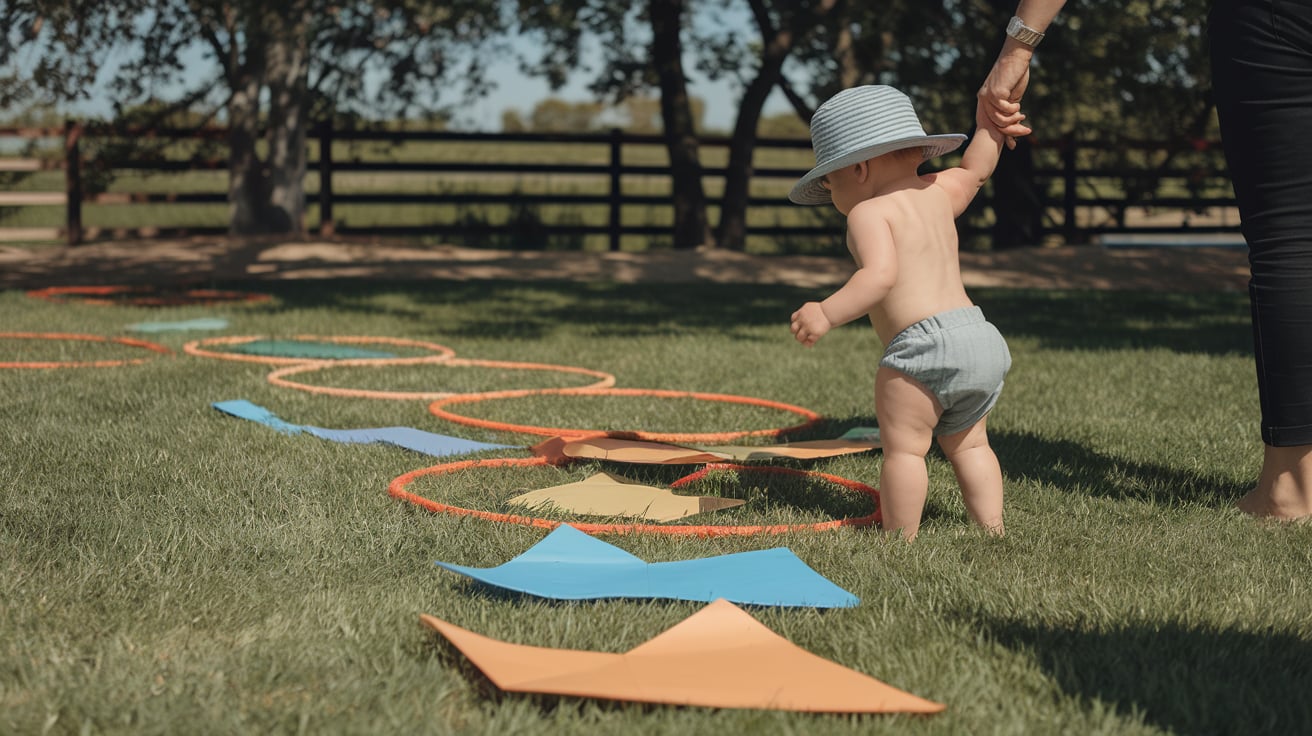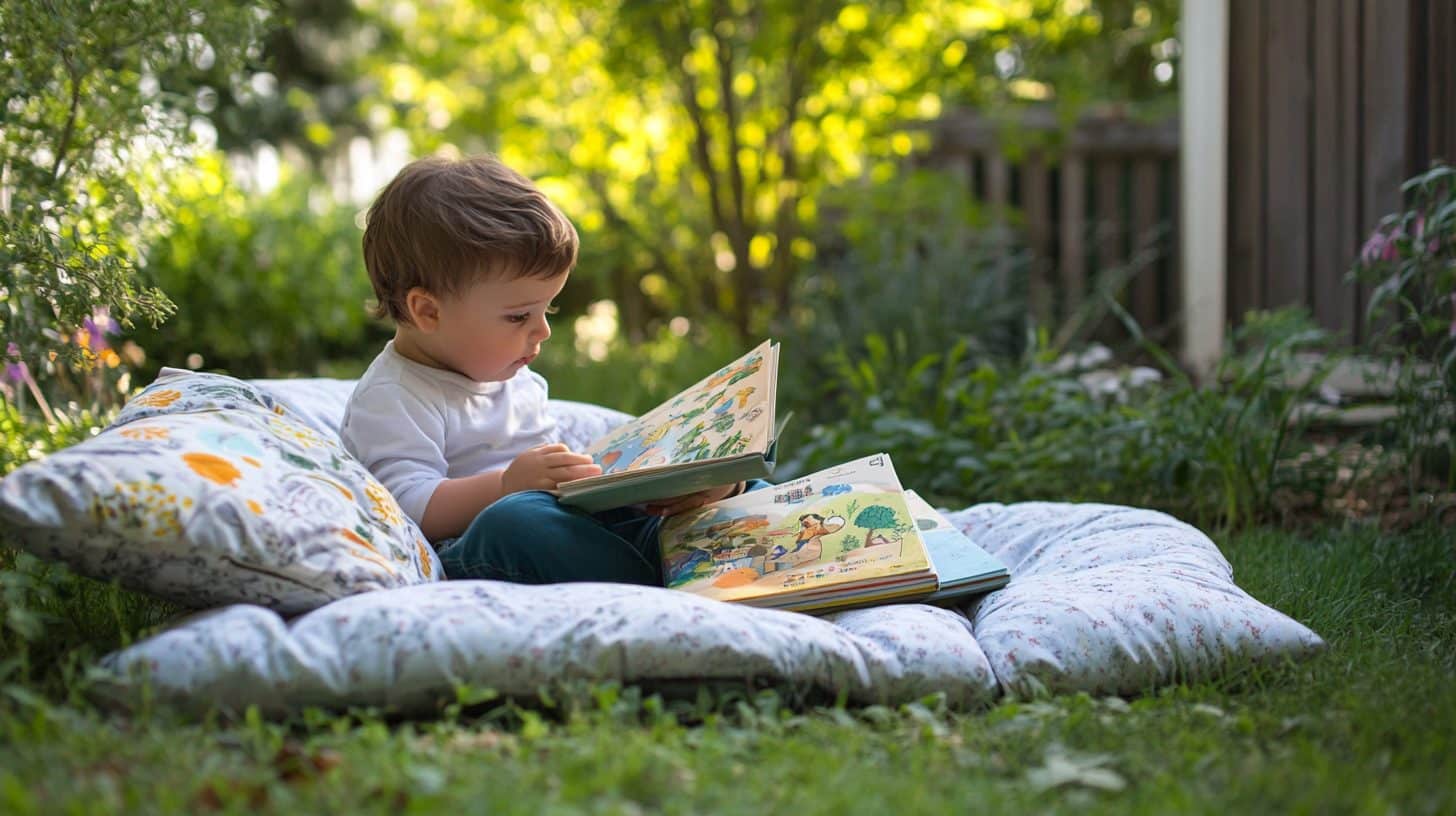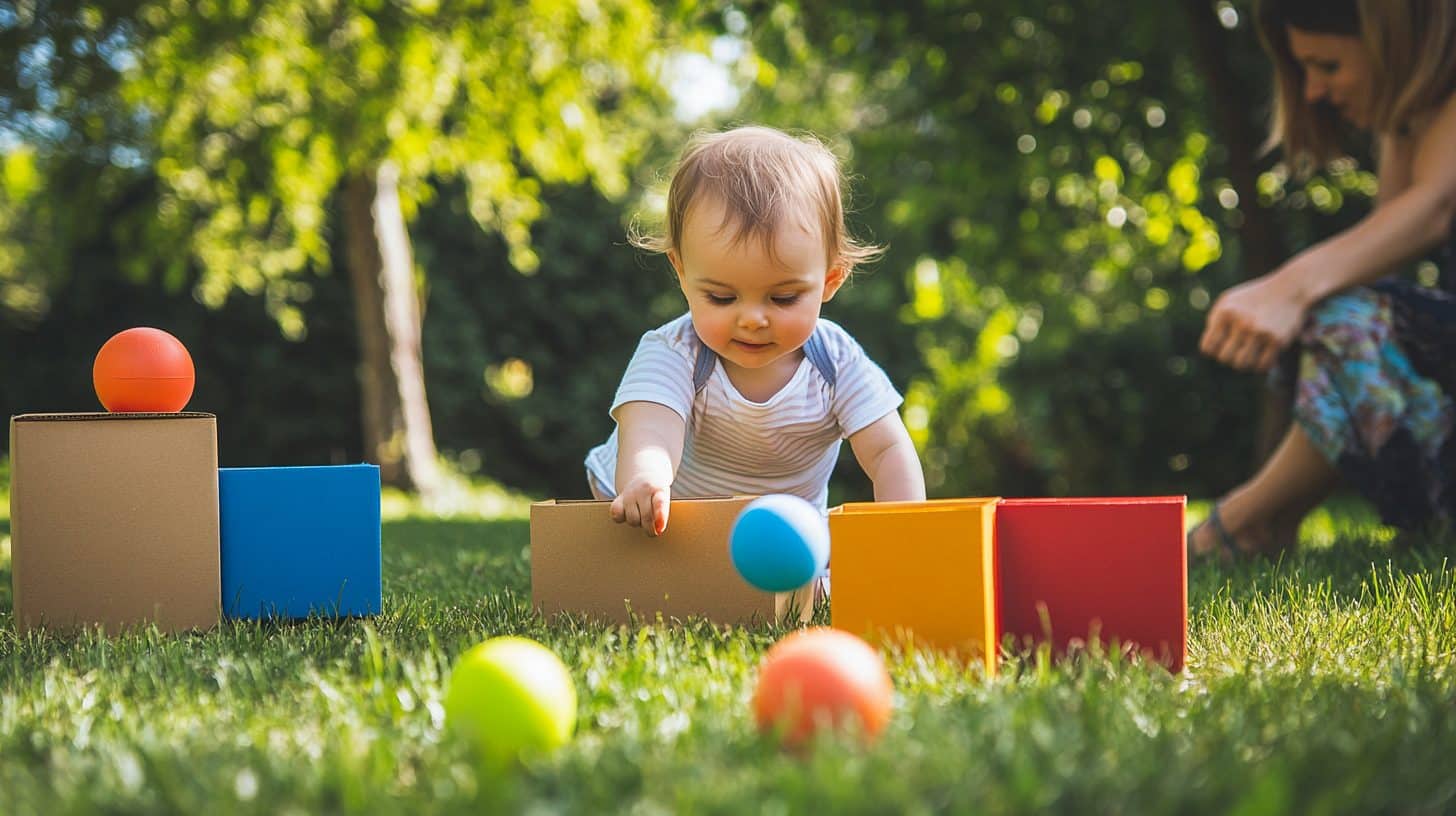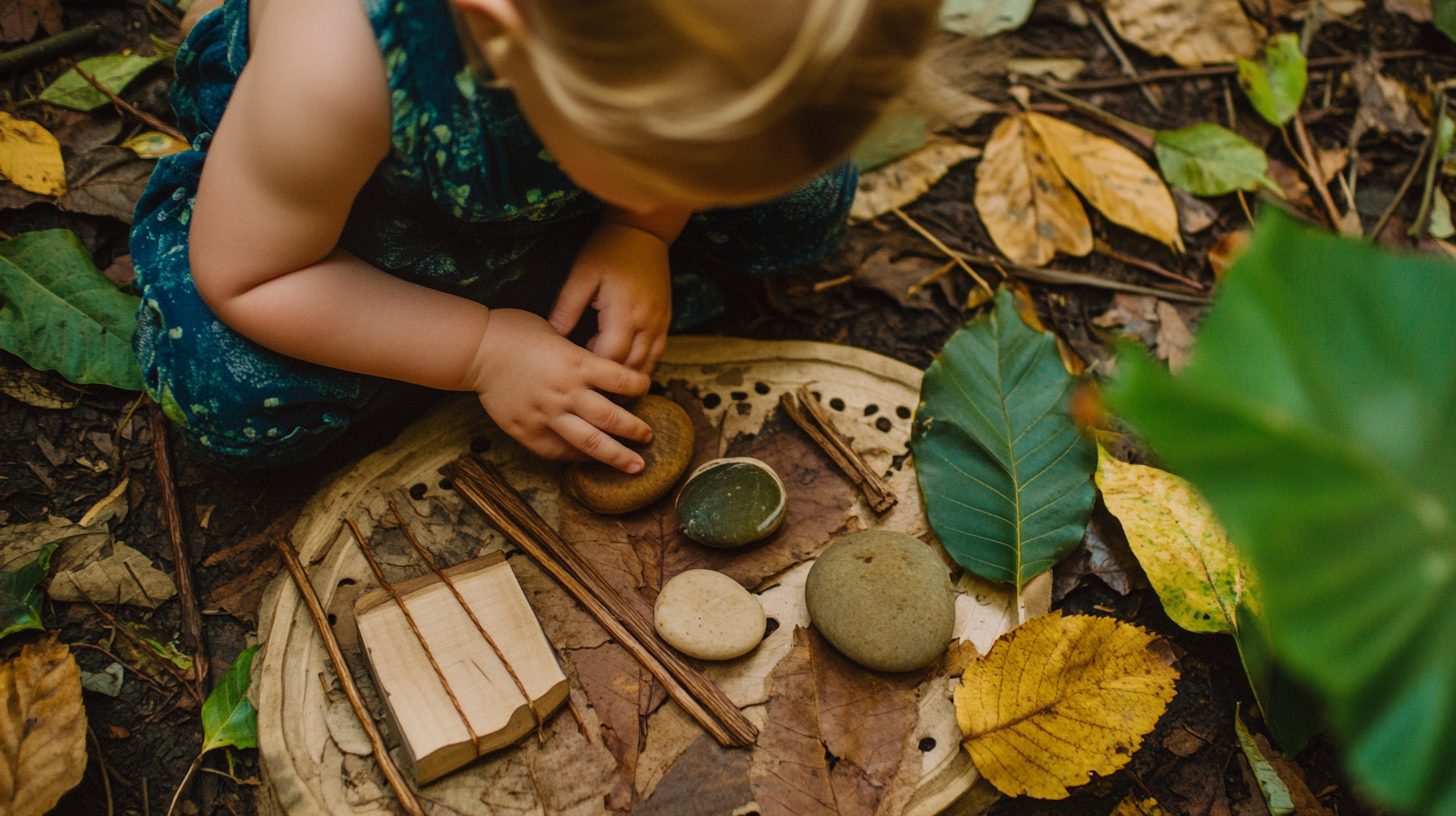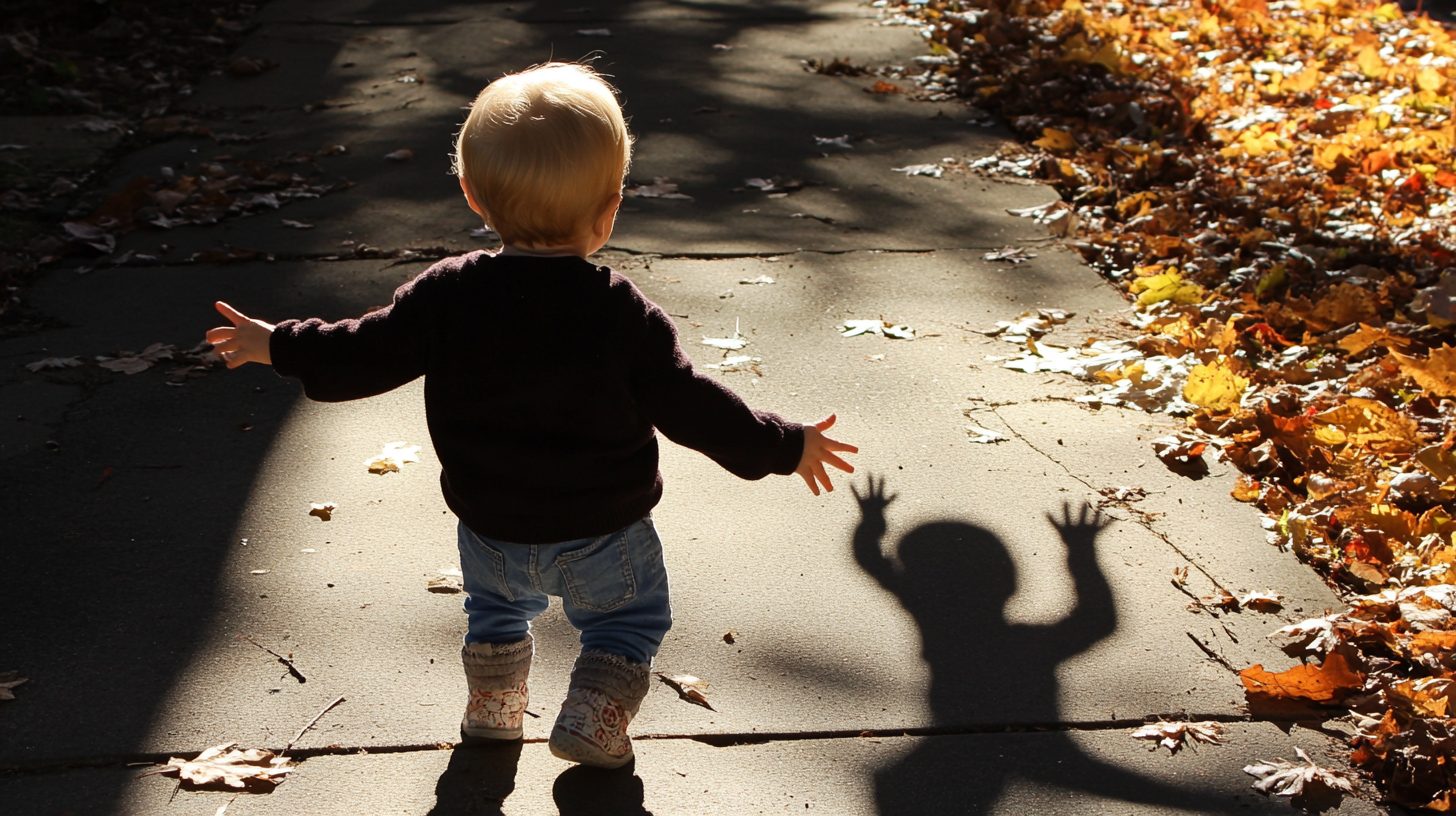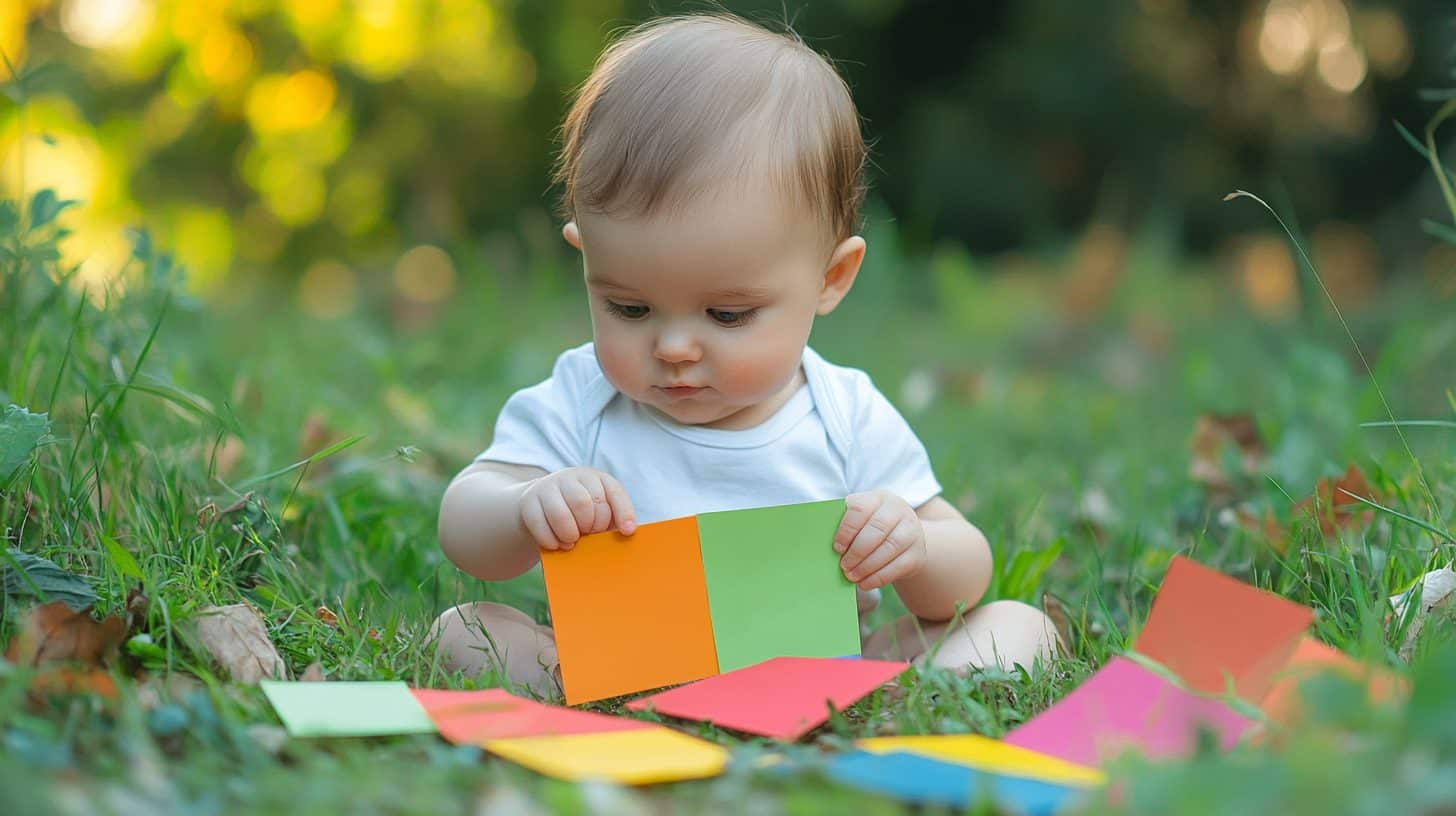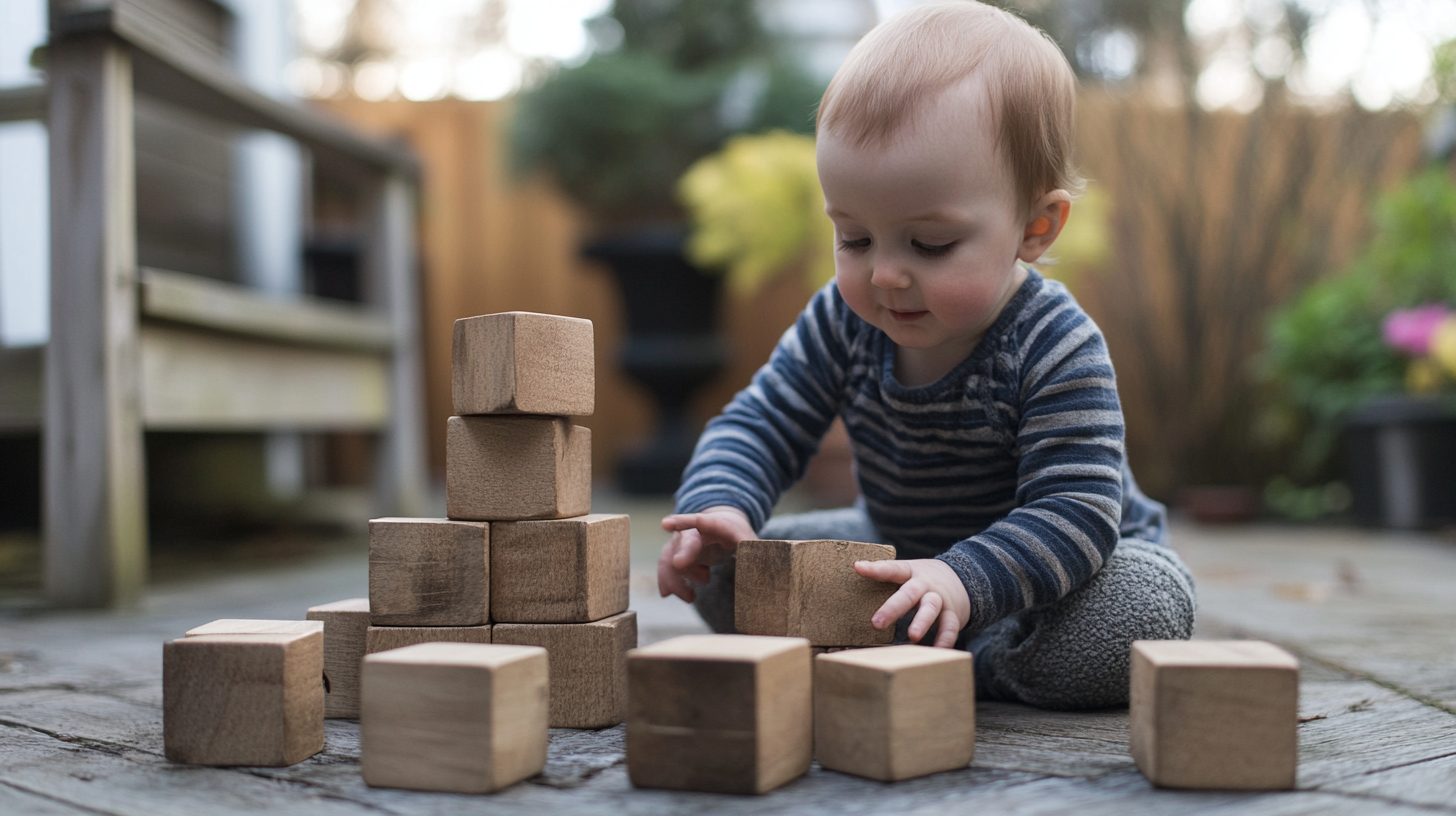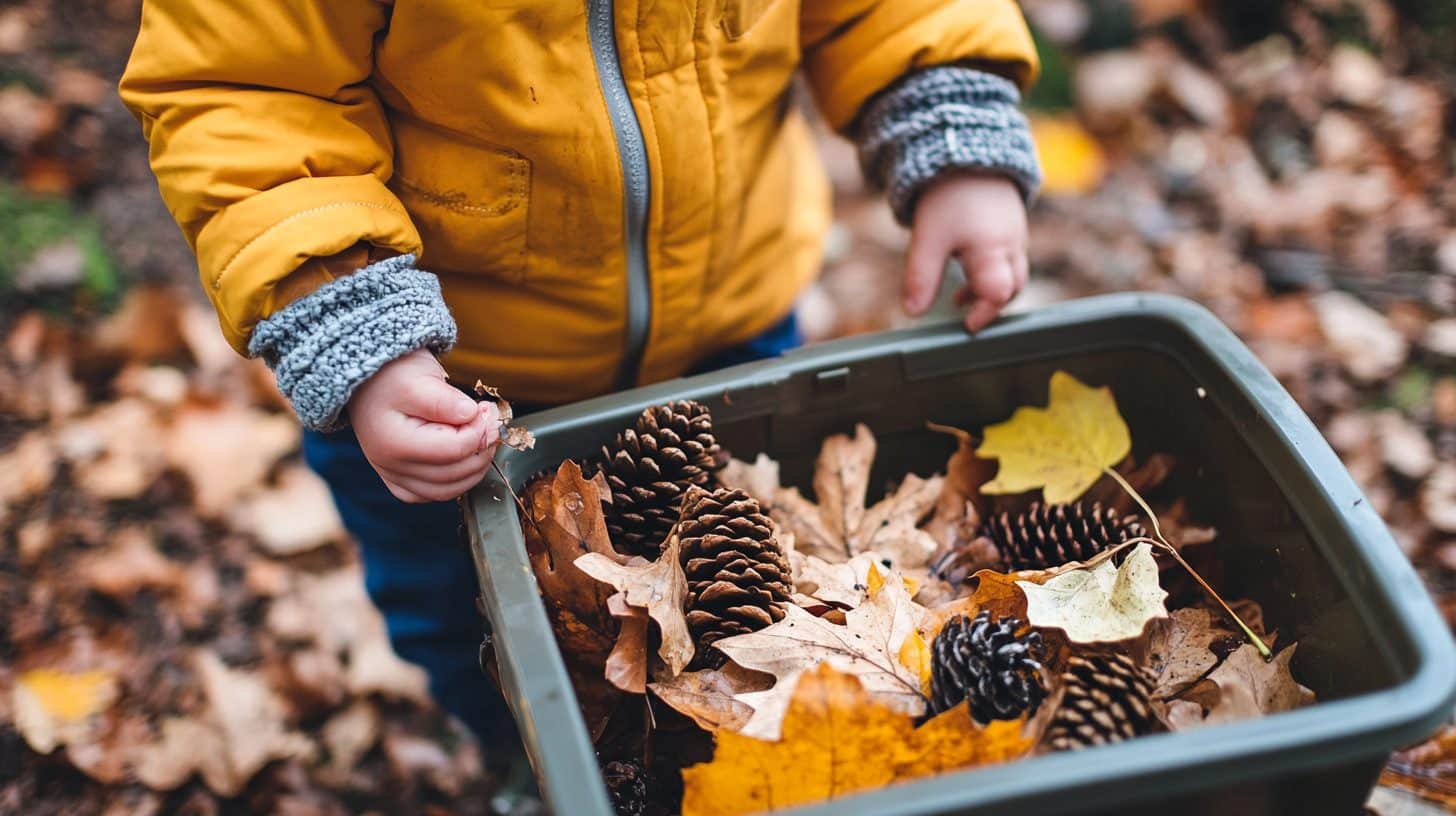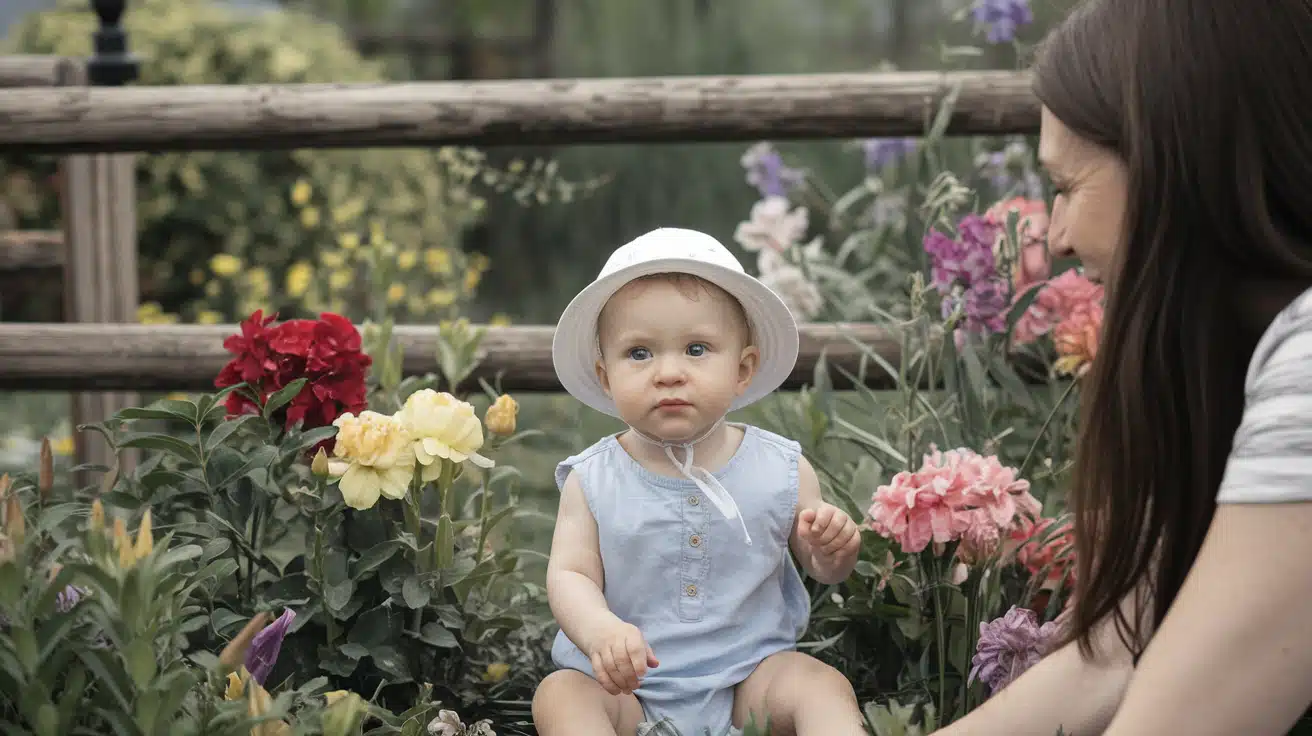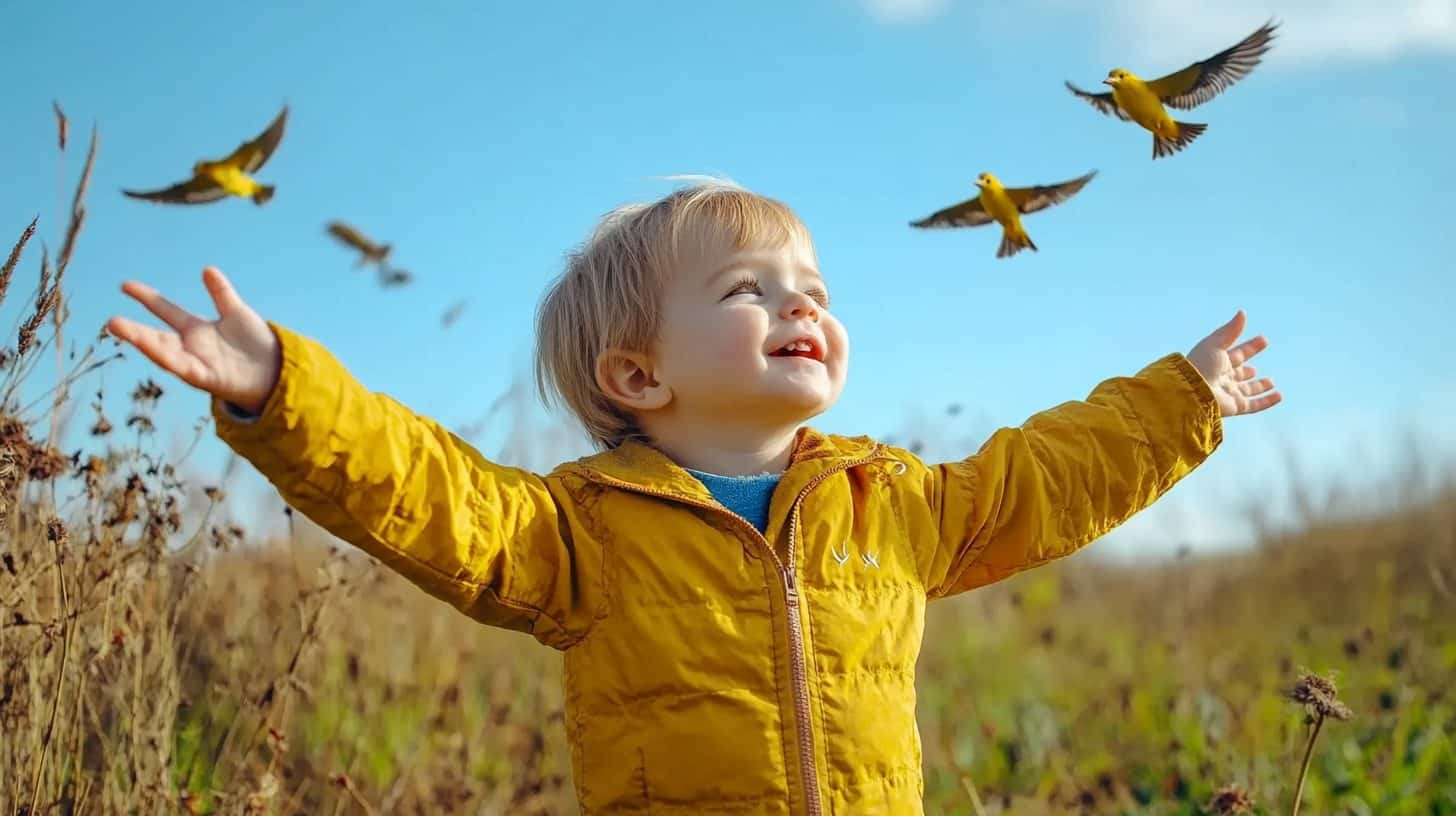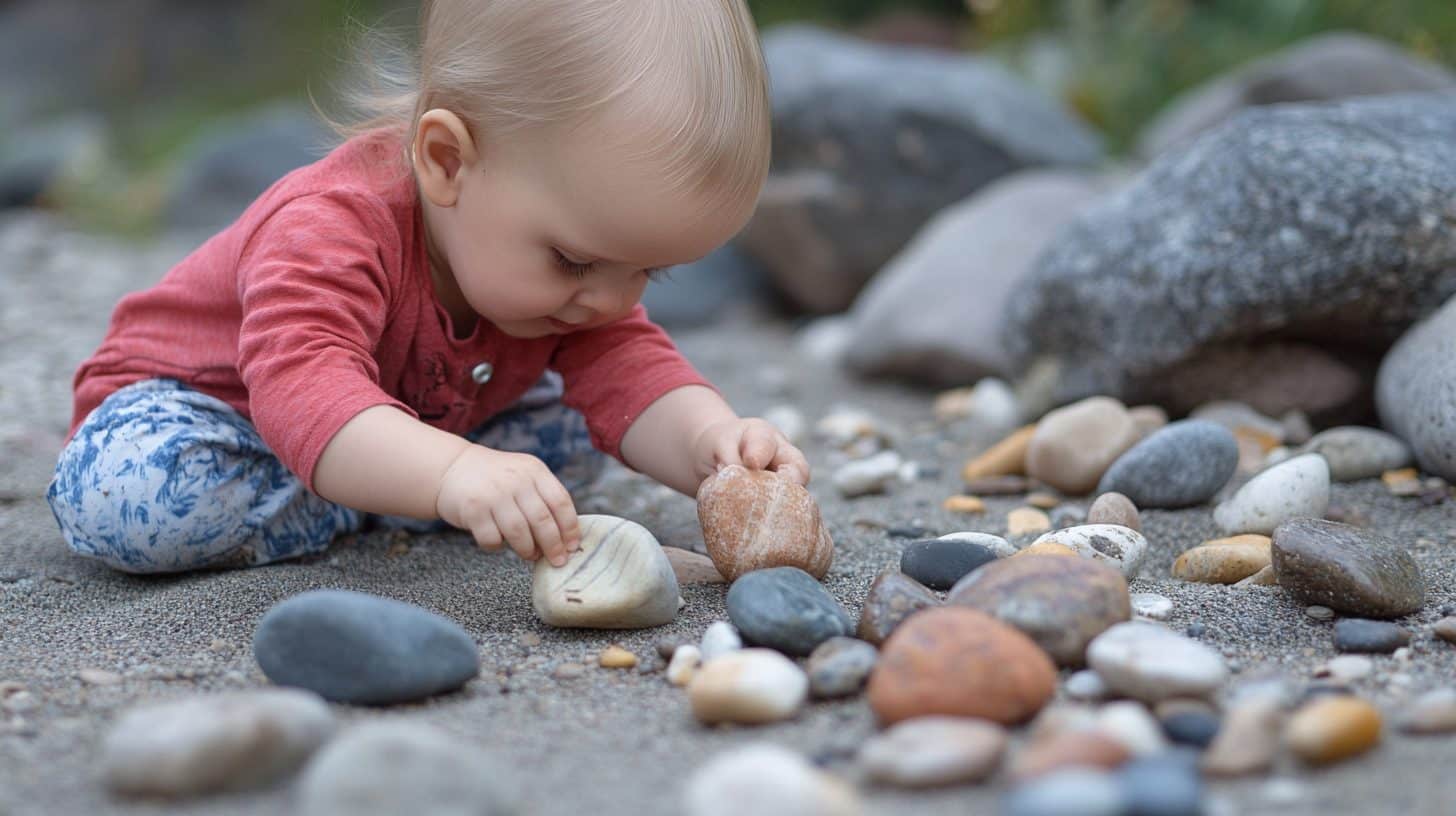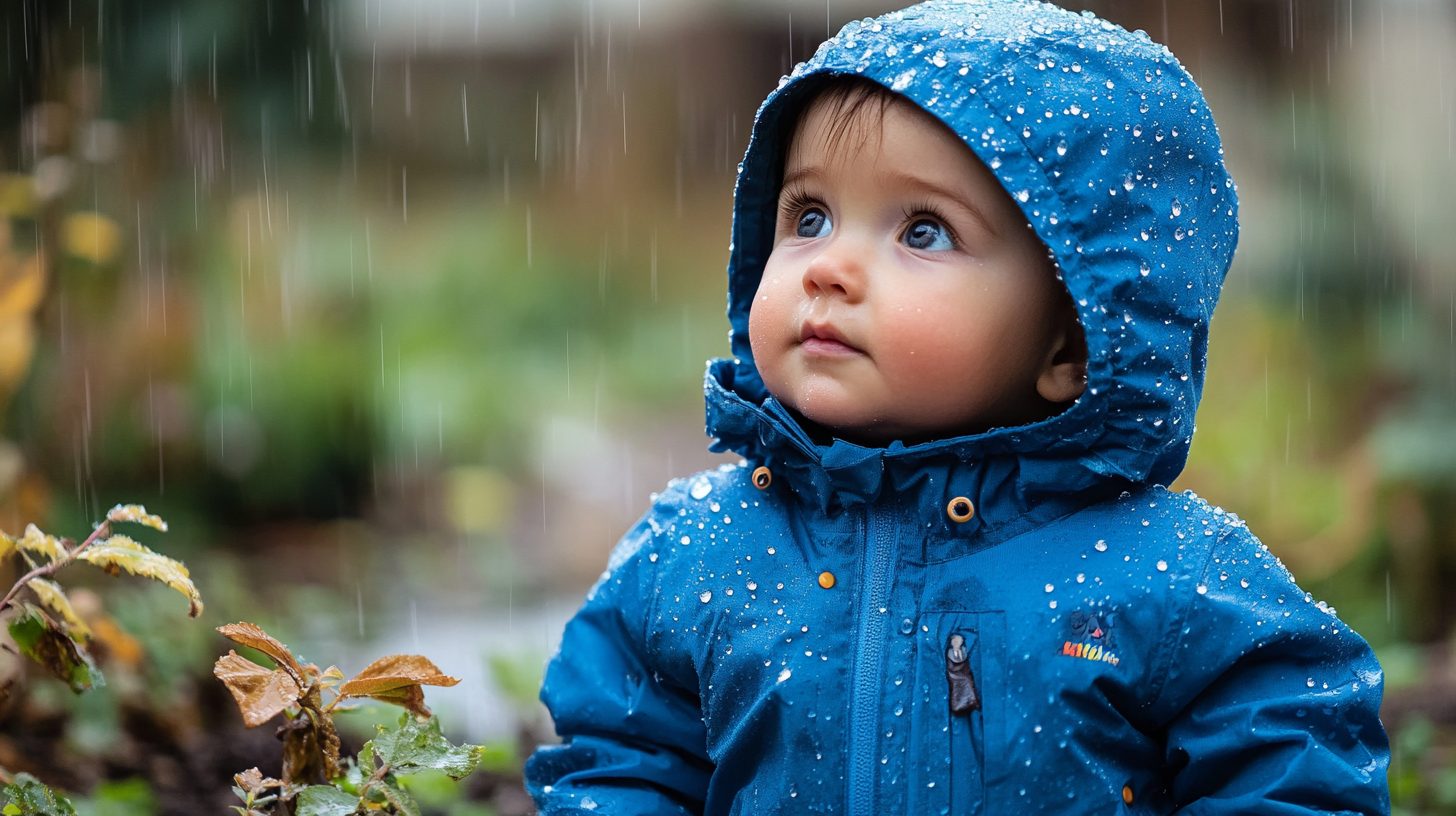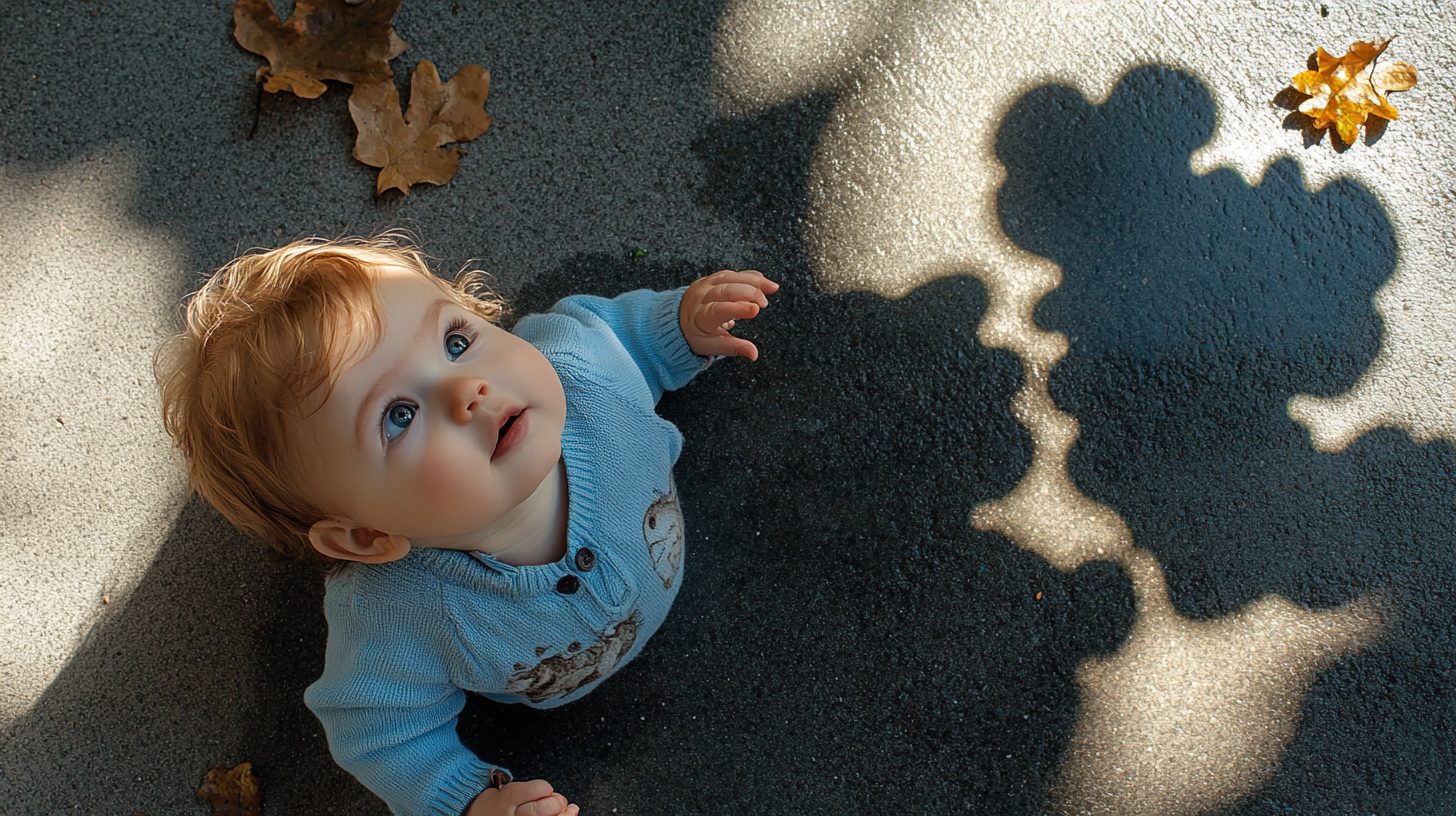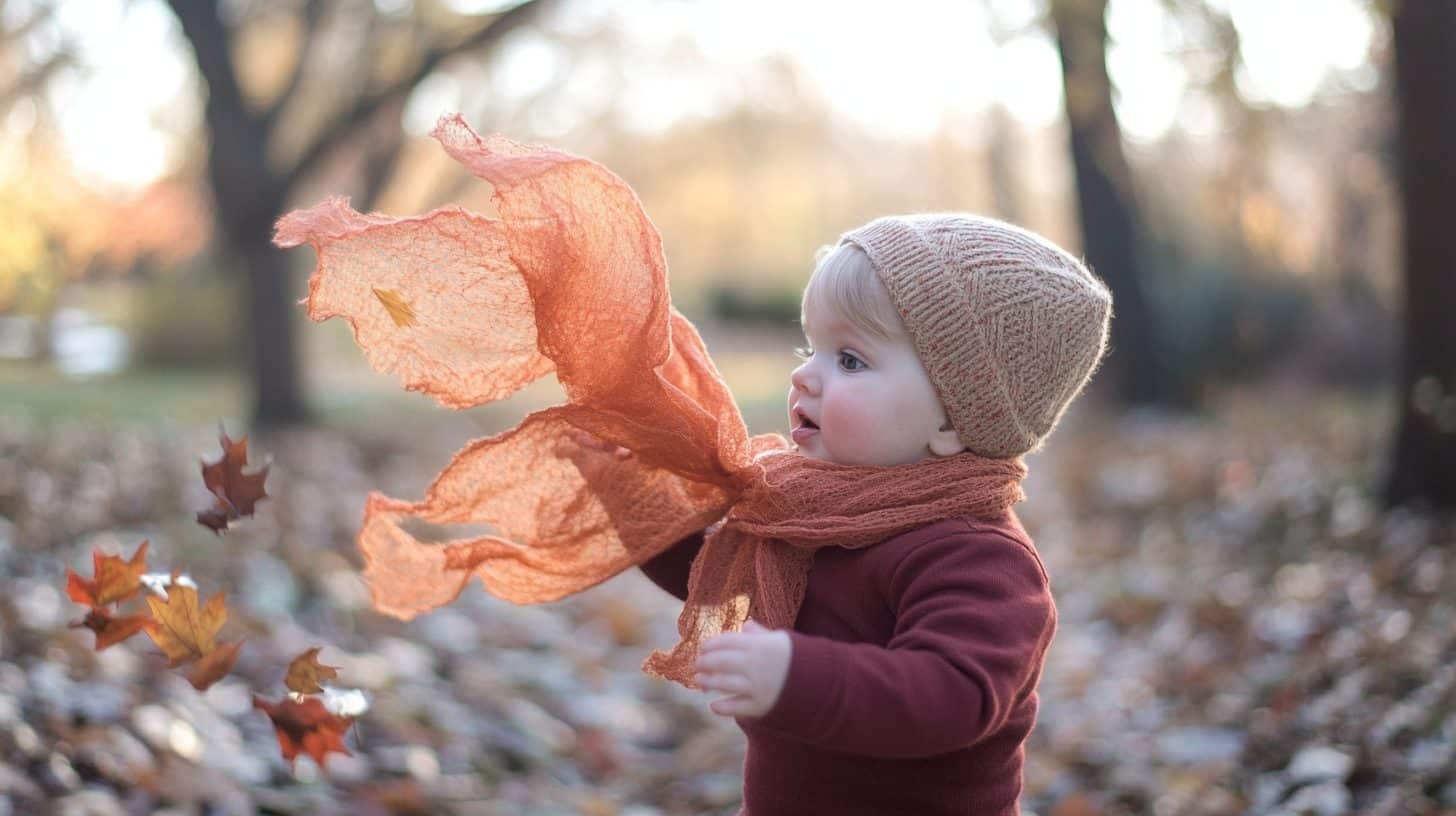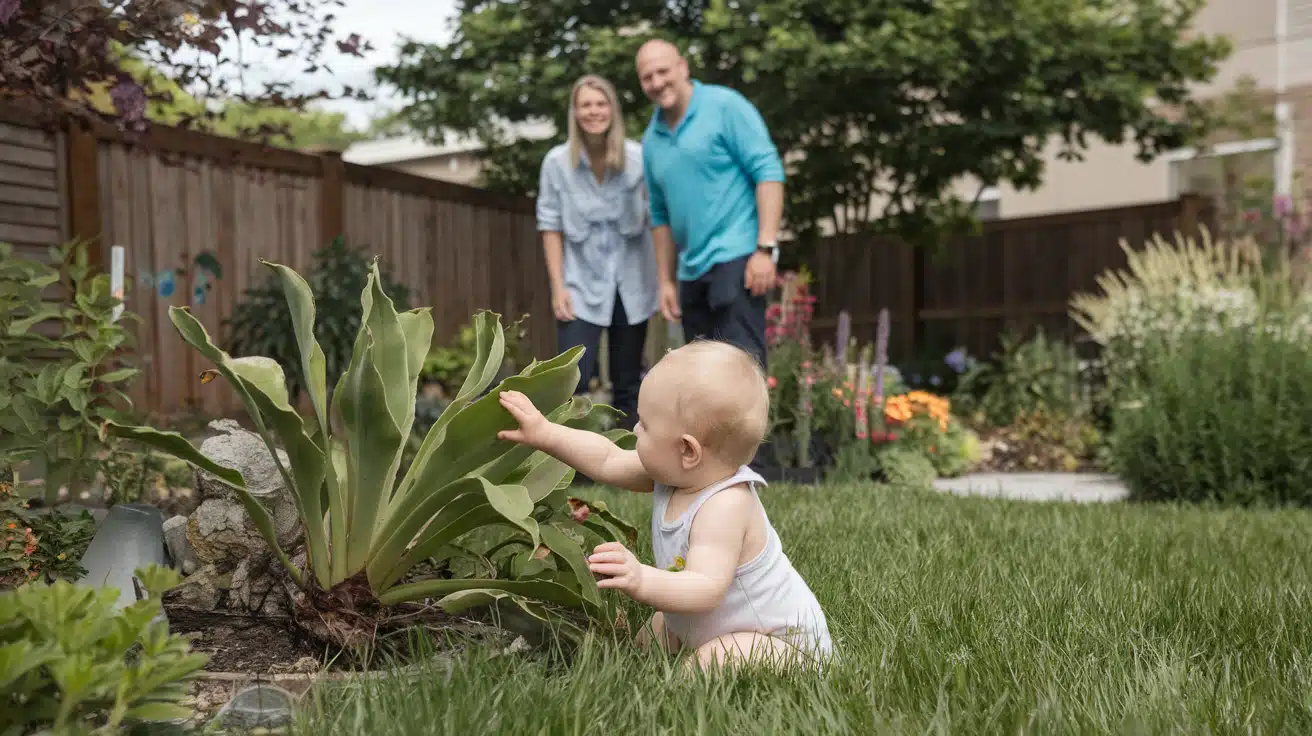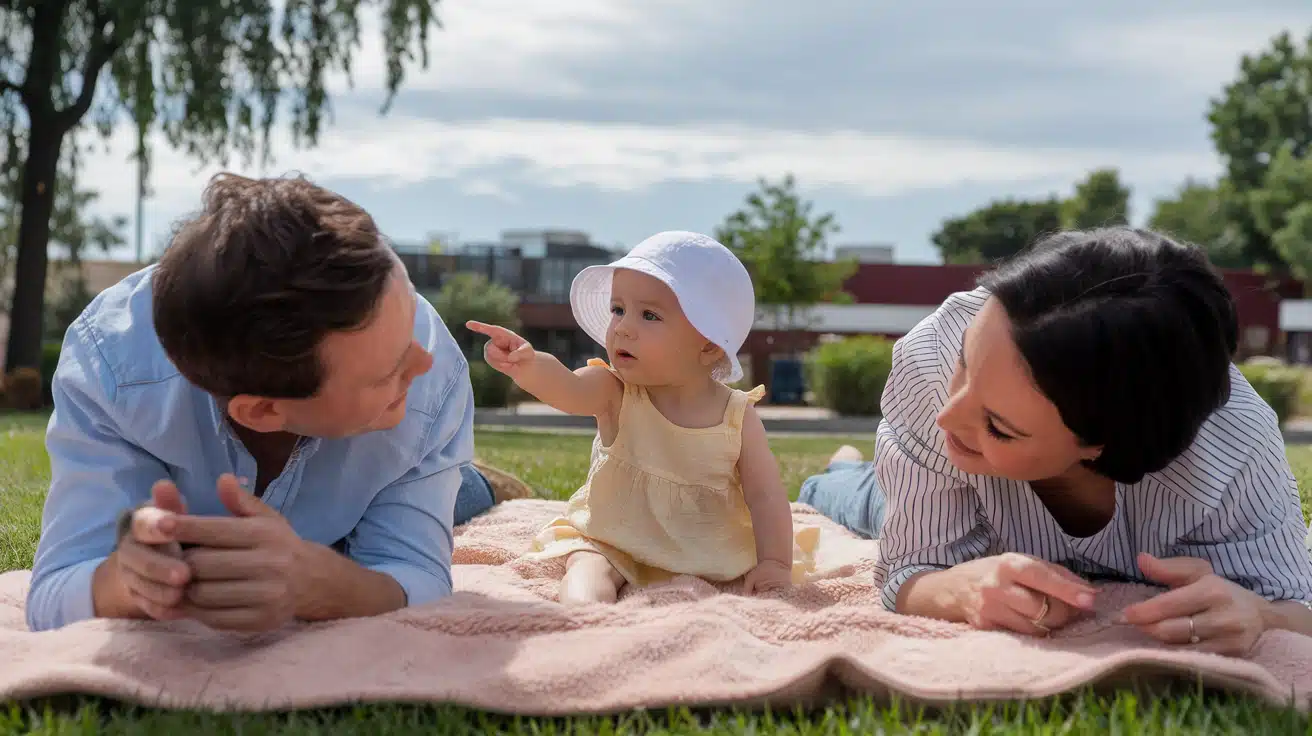Looking for safe outdoor fun with your 1-year-old?
As a parent, finding the right outdoor activities for a young toddler can feel overwhelming.
You want activities that help their growth but worry about safety and whether they’ll hold your little one’s interest.
Plus, it’s hard to know which activities match their developing skills.
These simple yet effective activities will support your child’s natural curiosity and physical development. Each activity is safe, age-appropriate, and tested by parents.
Let’s explore these engaging outdoor activities that will make both you and your one-year-old smile.
1. Water Play with Plastic Cups
How to Do:
- Fill different-sized plastic cups with water and place them on a flat surface outside.
- Let your little one pour water from one cup to another.
- Add colorful bath toys or rubber ducks to make it more fun.
- You can also include small watering cans for them to practice watering nearby plants.
| Benefits | Precautions |
|---|---|
| Teaches cause and effect when they see water flow | Never leave your child alone near water, even in shallow amounts |
| Builds hand-eye coordination | Use only a small amount of water in each cup |
| It helps learn basic concepts like empty and full | Choose a shaded area to prevent overheating |
| Strengthens hand muscles through gripping and pouring | Keep extra towels handy for cleanup |
2. Sandbox Exploration
How to Do:
- Create a small sandbox area using a plastic bin or container.
- Fill it with clean play sand.
- Give plastic cups, spoons, and small shovels.
- Let them scoop, pour, and touch the sand.
- Show them how to make simple patterns or fill containers.
| Benefits | Precautions |
|---|---|
| Improves fine motor skills through scooping and pouring | Check sand for any foreign objects before play |
| Teaches texture awareness | Keep sand away from eyes and mouth |
| Builds spatial awareness | Use clean, child-safe sand |
| Supports creative play and imagination | Have hand-washing supplies ready |
3. Nature Touch Board
How to Do:
- Create a touch board using smooth stones, pine cones, large leaves, and grass.
- Glue these items securely on a sturdy board.
- Let your child feel each texture.
- Name the items and describe how they feel.
| Benefits | Precautions |
|---|---|
| Develops vocabulary by naming items | Ensure all items are firmly attached |
| Enhances tactile awareness | Choose items without sharp edges |
| Helps learn nature’s different textures | Remove any items that show wear |
| Supports sensory processing skills | Supervise to prevent putting items in the mouth |
4. Musical Garden Bells
How to Do:
- Hang child-safe bells, wind chimes, or wooden blocks at your child’s height.
- Let them explore different sounds by touching and moving these items.
- You can also add ribbons that move in the breeze for visual interest.
| Benefits | Precautions |
|---|---|
| Develops auditory processing skills | Secure all items firmly |
| Teaches cause and effect | Use only child-safe materials |
| Enhances musical awareness | Check regularly for loose parts |
| Improves hand coordination | Place at a safe height |
5. Bubble Chase
How to Do:
- Blow bubbles at different heights and speeds.
- Let your one-year-old try to catch or pop them.
- Use a child-safe bubble solution
| Benefits | Precautions |
|---|---|
| Improves eye-tracking abilities | Use a non-toxic bubble solution |
| Develops gross motor skills | Keep solution out of reach |
| Teaches spatial awareness | Watch for slippery surfaces |
| Enhances visual processing | Take breaks to prevent dizziness |
6. Texture Walking Path
How to Do:
- Create a short walking path
- Using grass, smooth stones, sand, and foam mats.
- Hold your child’s hands as they walk or crawl over different surfaces.
| Benefits | Precautions |
|---|---|
| Builds balance and coordination | Use only smooth, safe materials |
| Develops foot sensitivity | Keep path short and level |
| Supports gross motor skills | Always support your child |
| Enhances texture recognition | Check surfaces for hazards |
7. Rain Stick Music
How to Do:
- Make simple rain sticks using clean, empty plastic bottles.
- Fill them with rice, small bells, or dry pasta.
- Seal tightly and let your child shake and roll them on a soft surface outside.
| Benefits | Precautions |
|---|---|
| Develops listening skills | Ensure bottles are sealed properly |
| Teaches sound recognition | Use only large, child-safe items inside |
| Improves grip strength | Check for wear and replace as needed |
| Supports rhythm awareness | Supervise play closely |
8. Color Garden Sorting
How to Do:
- Collect safe, colorful items from nature, like flowers, leaves, and stones.
- It helps your child sort them by color on a light-colored blanket.
- Name each color as you divide together.
| Benefits | Precautions |
|---|---|
| Introduces color recognition | Check items for safety |
| Builds sorting skills | Avoid small or sharp objects |
| Develops vocabulary | Keep items away from the mouth |
| Enhances visual discrimination | Use only non-toxic plants |
9. Mirror Play Outside
How to Do:
- Place a child-safe mirror outside on a blanket.
- Let your child see reflections of trees, clouds, and themselves.
- Move the mirror to show different angles and perspectives.
| Benefits | Precautions |
|---|---|
| Supports self-recognition | Use only shatterproof mirrors |
| Develops visual tracking | Keep mirror clean |
| Enhances environmental awareness | Avoid direct sunlight |
| Builds observation skills | Supervise constantly |
10. Sensory Water Wall
How to Do:
- Create a simple water wall using plastic bottles and tubes.
- Attached them to a fence or board.
- Pour water at the top and let your child watch it flow through different paths.
| Benefits | Precautions |
|---|---|
| Teaches cause and effect | Secure all parts firmly |
| Improves visual tracking | Use only clean water |
| Develops scientific thinking | Monitor for loose parts |
| Enhances focus and attention | Keep the area from getting too wet |
11. Natural Paint Brushes
How to Do:
- Make paintbrushes using natural items like leaves, grass, and flowers.
- Let your child dip them in water to “paint” on a fence or sidewalk.
- Watch as the watermarks create patterns.
| Benefits | Precautions |
|---|---|
| Develops creativity | Use only safe plants |
| Improves grip strength | Check for plant allergies |
| Teaches natural textures | Supervise water use |
| Supports artistic expression | Keep the area clean and safe |
12. Cloud Watch and Point
How to Do:
- Lay a soft blanket on the grass and lie down with your one-year-old.
- Point to different clouds in the sky.
- Make simple sounds for each cloud shape you see.
- Move your hands to follow the clouds’ movement.
- You can make this more fun by making gentle sounds like “whoosh” or “float” as you point.
| Benefits | Precautions |
|---|---|
| Builds early observation skills | Choose a clean, dry spot |
| It helps develop attention span | Avoid looking directly at the sun |
| Supports language growth | Keep playtime short |
| Creates peaceful outdoor bonding time | Use sunscreen and a hat |
13. Peek-a-Boo with Plants
How to Do:
- Find safe, large plants or bushes in your yard.
- Play peek-a-boo by hiding partly behind them.
- Call your child’s name softly.
- Move to different plants to keep interest.
- This simple game helps them learn that things exist even when hidden.
| Benefits | Precautions |
|---|---|
| It teaches object permanence | Check plants are non-toxic |
| Builds memory skills | Stay visible to your child |
| Supports emotional bonds | Watch for insects |
| Encourages physical movement | Keep away from thorny plants |
14. Follow the Path
How to Do:
- Create a simple path using large paper shapes, hula hoops, or rope on grass.
- Walk with your child, holding their hands as they follow the path.
- They make happy sounds when they step on each new spot.
- Change the path design each time.
| Benefits | Precautions |
|---|---|
| Improves balance | Secure all materials firmly |
| Develops spatial awareness | Keep the path short and simple |
| Builds confidence in walking | Support the child while walking |
| Teaches basic patterns | Remove tripping hazards |
15. Outdoor Story Corner
How to Do:
- Use pillows and a blanket to set up a cozy reading spot outside.
- Choose sturdy board books about nature, animals, or weather.
- Point to real objects that match pictures in the books.
- Make animal sounds or weather noises while reading.
| Benefits | Precautions |
|---|---|
| Builds early literacy skills | Choose a shaded spot |
| Connects books to the real world | Keep books clean and dry |
| Enhances listening abilities | Watch for weather changes |
| Supports language development | Use washable materials |
16. Ball and Box Play
How to Do:
- Collect different-sized boxes and soft balls.
- Show your child how to drop balls into boxes.
- Stack boxes to make tunnels. Roll balls through them.
- Name the colors of balls and boxes as you play.
- Make happy sounds when balls go in.
| Benefits | Precautions |
|---|---|
| Develops hand-eye coordination | Use lightweight boxes |
| Teaches size relationships | Choose large softballs |
| Builds problem-solving skills | Remove damaged boxes |
| Improves motor control | Keep the play area clear |
17. Nature’s Music Makers
How to Do:
- Gather safe outdoor items like large leaves, sticks, and smooth stones.
- Show your child how to make gentle sounds with them.
- Tap stones together softly, rustle leaves, or drum on plastic containers.
- Create simple rhythms together.
| Benefits | Precautions |
|---|---|
| Introduces musical concepts | Check items for sharp edges |
| Develops listening skills | Clean items before use |
| Supports creativity | Supervise closely |
| Builds motor skills | Avoid small pieces |
18. Shadow Play
How to Do:
- Find a sunny spot in the early morning or late afternoon.
- Show your child their shadow.
- Wave hands, move arms, and dance together.
- Watch how shadows move.
- Point and name body parts as you see them in the shadows.
| Benefits | Precautions |
|---|---|
| Teaches body awareness | Limit time in direct sun |
| Builds movement skills | Use sun protection |
| Supports visual tracking | Choose cooler times of day |
| Encourages physical activity | Keep activities brief |
19. Nature’s Color Match
How to Do:
- Place colored paper squares outside.
- Help your child find natural items that match each color.
- Put leaves on green paper, flowers on red paper, and so on.
- Name colors and items as you find them together.
| Benefits | Precautions |
|---|---|
| Supports color recognition | Check items for safety |
| Builds matching skills | Avoid small pieces |
| Develops vocabulary | Watch for allergic plants |
| Enhances observation skills | Keep items from mouth |
20. Outdoor Block Play
How to Do:
- Take large, lightweight blocks outside.
- Show how to stack them on a flat surface.
- Build simple towers together. Knock them down safely.
- Count blocks out loud. Name colors as you stack.
| Benefits | Precautions |
|---|---|
| Improves balance skills | Use only soft blocks |
| Teaches early math concepts | Play on level ground |
| Develops spatial awareness | Keep towers low |
| Builds fine motor skills | Watch for falling blocks |
21. Nature’s Treasure Box
How to Do:
- Give your child a large plastic container.
- Walk together in a safe area.
- Help them collect big leaves, pine cones, or flowers.
- Look at each item together.
- Feel textures and talk about what you find.
| Benefits | Precautions |
|---|---|
| Builds collecting skills | Check items for safety |
| Develops sorting abilities | Avoid small objects |
| Supports language growth | Watch for sharp edges |
| Encourages exploration | Clean items if needed |
22. Mirror Me Outside
How to Do:
- Stand facing your child in an open space.
- Make simple movements like waving arms or patting the head.
- Encourage them to copy you.
- Smile and clap when they try.
- Keep movements slow and clear.
| Benefits | Precautions |
|---|---|
| Supports body awareness | Start with simple moves |
| Builds imitation skills | Keep space clear |
| Develops coordination | Watch their balance |
| Enhances social bonds | Take frequent breaks |
23. Flower Watching
How to Do:
- Place your one-year-old in a safe spot near blooming flowers.
- Point to different flowers and name their colors.
- Watch bees and butterflies visit the flowers from a safe distance.
- Make gentle buzzing sounds to mimic the insects.
- Let them touch large, soft petals under your guidance.
| Benefits | Precautions |
|---|---|
| Builds nature awareness | Check flowers are non-toxic |
| Develops color recognition | Keep distance from bees |
| Supports sensory learning | Watch for allergic reactions |
| Introduces basic science concepts | Supervise flower touching |
24. Tree Trunk Touch
How to Do:
- Take your little one to feel different tree bark textures.
- Hold them close to large, sturdy trees.
- Help them touch the bark gently.
- Name the textures – smooth, bumpy, rough.
- Make happy sounds as they explore each tree.
| Benefits | Precautions |
|---|---|
| Enhances texture recognition | Check bark for sharp edges |
| Builds vocabulary | Watch for insects |
| Develops sensory awareness | Clean hands afterward |
| Supports nature connection | Support the child’s balance |
25. Bird Watch
How to Do:
- Set up a comfortable spot where birds often visit.
- Point to birds and make soft bird sounds.
- Count birds together and Move arms like wings.
- Watch birds eat, fly, and hop.
- Keep voices quiet to avoid scaring them away.
| Benefits | Precautions |
|---|---|
| Improves observation skills | Stay at safe distance |
| Teaches quiet watching | Keep noise levels low |
| Develops counting skills | Use sun protection |
| Builds patience | Watch for bird droppings |
26. Rock Collection
How to Do:
- Find smooth, large rocks in your yard.
- Help your child pick them up and place them in a container.
- Feel their weights and textures.
- Stack bigger rocks and roll them on the grass.
- Count rocks together.
| Benefits | Precautions |
|---|---|
| Strengthens hand muscles | Choose rocks without sharp edges |
| Teaches weight differences | Clean rocks before play |
| Builds sorting skills | Watch for small rocks |
| Develops counting ability | Supervise lifting |
27. Leaf Play
How to Do:
- Collect large, fallen leaves.
- Show your child how they move in the wind.
- Place leaves on a blanket.
- Crinkle dry leaves to make sounds.
- Sort leaves by size or color.
| Benefits | Precautions |
|---|---|
| Supports sound exploration | Check leaves are clean |
| Develops sorting abilities | Remove damaged leaves |
| Builds tactile awareness | Watch for insects |
| Teaches cause and effect | Keep leaves from mouth |
28. Rain Watching
How to Do:
- During light rain, sit under a covered porch or patio.
- Watch raindrops fall on plants and puddles.
- Listen to rain sounds and point to splashes.
- Feel safe raindrops on your hands.
- Watch how water moves on surfaces.
| Benefits | Precautions |
|---|---|
| Enhances weather awareness | Stay completely covered |
| Develops listening skills | Keep warm and dry |
| Supports sensory learning | Avoid heavy rain |
| Builds observation skills | Watch for slippery spots |
29. Cloud Shadows
How to Do:
- Find a spot to watch cloud shadows move across the ground.
- Point to changing light patterns.
- Move with the shadows.
- Make soft “whoosh” sounds as shadows pass.
| Benefits | Precautions |
|---|---|
| Teaches light concepts | Use sun protection |
| Supports movement skills | Keep activities brief |
| Builds tracking ability | Watch footing |
| Enhances nature awareness | Stay in safe areas |
30. Wind Play
How to Do:
- On breezy days, show your child how wind moves leaves and grass.
- Hold up scarves to catch the wind.
- Watch trees sway.
- Make gentle wind sounds.
- Feel the breeze on faces and hands.
| Benefits | Precautions |
|---|---|
| Builds weather awareness | Avoid strong winds |
| Develops sensory skills | Watch for falling items |
| Supports sound making | Keep scarves loose |
| Teaches cause and effect | Stay in open areas |
31. Garden Touch
How to Do:
- Take your one-year-old to a safe garden area.
- Let them touch large plant leaves.
- Feel the soil in your hands, and watch garden tools work.
- Name plants and tools. Show how plants grow in soil.
| Benefits | Precautions |
|---|---|
| Introduces plant life | Check plants are safe |
| Builds garden awareness | Clean hands after play |
| Develops vocabulary | Keep tools out of reach |
| Supports nature connection | Watch for insects |
32. Nature Sounds
How to Do:
- Find a quiet outdoor spot.
- Listen for bird songs, wind in trees, or leaves rustling.
- Point in sound directions.
- Make simple sound copies.
- Watch your child’s reactions to different sounds.
| Benefits | Precautions |
|---|---|
| Enhances listening skills | Choose quiet times |
| Develops focus | Stay in familiar areas |
| Supports sound recognition | Watch weather changes |
| Builds nature awareness | Keep sessions short; Avoid loud areas |
Conclusion
These activities help your little one develop essential skills through play and exploration.
Remember, each activity supports your child’s natural growth in different ways.
Start with simple activities that match your child’s interests. You might notice that your one-year-old loves exploration one day and nature sounds the next.
Want to make these activities even better?
Share your outdoor play moments with other parents, and don’t forget to take pictures of these precious learning experiences.


